How Does Light Travel Through Space? Facts & FAQ
Last Updated on Mar 15 2024

Light is such a fundamental part of our lives. From the moment we’re born, we are showered with all kinds of electromagnetic radiation, both colorful, and invisible. Light travels through the vacuum of space at 186,828 miles per second as transverse waves , outside of any material or medium, because photons—the particles that make up light—also behave as waves. This is referred to as the wave-particle duality of light.
- What Is Light?
The wave-particle duality of light simply means that light behaves as both waves and particles . Although this has been long accepted as fact, scientists only managed to observe both these properties of light ¹ simultaneously for the first time in 2015.
As a wave, light is electromagnetic radiation—vibrations, or oscillations, of the electric and magnetic fields. As particles, light is made up of little massless packets of energy called photons ¹ .
- What Are Light Waves?
Waves are the transference of energy from one point to another. If we dropped a pebble into a small pond, the energy that the impact creates would transfer as a ripple, or a wave, that travels through the surface of the water, from one water particle to another, until eventually reaching the edge of the pond.
This is also how sound waves work—except that, with sound, it’s the pressure or vibrations of particles in the air that eventually reach our ears.
Unlike water and sound, light itself is electromagnetic radiation—or light waves—so it doesn’t need a medium to travel through.
- What Are Transverse Waves?
Light propagates through transverse waves. Transverse waves refer to a way in which energy is transferred.
Transverse waves oscillate at a 90-degree angle (or right angle) to the direction the energy is traveling in. An easy way to picture this is to imagine an S shape flipped onto its side. The waves would be going up and down, while the energy would be moving either left or right.
With light waves ¹ , there are 2 oscillations to consider. If the light wave is traveling on the X axis, then the oscillations of the electric field would be at a right angle, either along the Y or Z axes, and the oscillations of the magnetic field would be on the other.
- Can Anything Travel Faster Than Light?
The simple answer to this question is no, as far as we know at this time, nothing can go faster than the speed of light ¹ . Albert Einstein’s special theory of relativity states that “no known object can travel faster than the speed of light in a vacuum.”
Space and time don’t yet exist beyond the speed of light—if we were to travel that fast, the closer we get to the speed of light, the more our spatial dimension would shrink, until eventually collapsing.
Beyond this, the laws of physics state that as an object approaches the speed of light , its mass would become infinite, and so would the energy it would need to propel it. Since it’s probably impossible to create an infinite amount of energy, it would be difficult for anything to travel faster than light.
Tachyon, a hypothetical particle, is said to travel faster than the speed of light. However, because its speed would not be consistent with the known laws of physics, physicists believe that tachyon particles do not exist.
- Final Thoughts
Light travels through space as transverse, electromagnetic waves. Its wave-particle duality means that it behaves as both particles and waves. As far as we know, nothing in the world travels as fast as light.
- https://phys.org/news/2015-03-particle.html
- https://www.nature.com/articles/ncomms7407
- https://www.wtamu.edu/~cbaird/sq/2017/07/20/is-the-reason-that-nothing-can-go-faster-than-light-because-we-have-not-tried-hard-enough/
- https://www.physics.brocku.ca/PPLATO/h-flap/phys6_1f_1.png
- https://science.nasa.gov/ems/02_anatomy
Featured Image Credit: NASA, Unsplash
Table of Contents

About the Author Cheryl Regan
Cheryl is a freelance content and copywriter from the United Kingdom. Her interests include hiking and amateur astronomy but focuses her writing on gardening and photography. If she isn't writing she can be found curled up with a coffee and her pet cat.
Related Articles:
15 Crucial Facts About Ultraviolet Rays & the Sun
What Constellation Is Spica In? The Interesting Answer!
10 Interesting Leo Constellation Facts, Myths, and FAQs
15 Interesting Pegasus Constellation Facts, Myths, and FAQs
6 Interesting Sagittarius Constellation Facts, Myths, and FAQs in 2024!
What Are Constellations? Where Did They Come From?
8 Interesting Libra Constellation Facts, Myths, and FAQs
What Is Infrared Radiation? Science-Based Facts & FAQ

- school Campus Bookshelves
- menu_book Bookshelves
- perm_media Learning Objects
- login Login
- how_to_reg Request Instructor Account
- hub Instructor Commons
- Download Page (PDF)
- Download Full Book (PDF)
- Periodic Table
- Physics Constants
- Scientific Calculator
- Reference & Cite
- Tools expand_more
- Readability
selected template will load here
This action is not available.

20.4: Cosmic Rays
- Last updated
- Save as PDF
- Page ID 3745

Learning Objectives
By the end of this section, you will be able to:
- Define cosmic rays and describe their composition
- Explain why it is hard to study the origin of cosmic rays, and the current leading hypotheses about where they might come from
In addition to gas and dust, a third class of particles, noteworthy for the high speeds with which they travel, is found in interstellar space. Cosmic rays were discovered in 1911 by an Austrian physicist, Victor Hess, who flew simple instruments aboard balloons and showed that high-speed particles arrive at Earth from space (Figure \(\PageIndex{1}\)). The term “cosmic ray” is misleading, implying it might be like a ray of light, but we are stuck with the name. They are definitely particles and have nearly the same composition as ordinary interstellar gas. Their behavior, however, is radically different from the gas we have discussed so far.

The Nature of Cosmic Rays
Cosmic rays are mostly high-speed atomic nuclei and electrons. Speeds equal to 90% of the speed of light are typical. Almost 90% of the cosmic rays are hydrogen nuclei (protons) stripped of their accompanying electron. Helium and heavier nuclei constitute about 9% more. About 1% of cosmic rays have masses equal to the mass of the electron, and 10–20% of these carry positive charge rather than the negative charge that characterizes electrons. A positively charged particle with the mass of an electron is called a positron and is a form of antimatter (we discussed antimatter in The Sun: A Nuclear Powerhouse).
The abundances of various atomic nuclei in cosmic rays mirror the abundances in stars and interstellar gas, with one important exception. The light elements lithium, beryllium, and boron are far more abundant in cosmic rays than in the Sun and stars. These light elements are formed when high-speed, cosmic-ray nuclei of carbon, nitrogen, and oxygen collide with protons in interstellar space and break apart. (By the way, if you, like most readers, have not memorized all the elements and want to see how any of those we mention fit into the sequence of elements, you will find them all listed in Appendix K in order of the number of protons they contain.)
Cosmic rays reach Earth in substantial numbers, and we can determine their properties either by capturing them directly or by observing the reactions that occur when they collide with atoms in our atmosphere. The total energy deposited by cosmic rays in Earth’s atmosphere is only about one-billionth the energy received from the Sun, but it is comparable to the energy received in the form of starlight. Some of the cosmic rays come to Earth from the surface of the Sun, but most come from outside the solar system.
Where Do They Come From?
There is a serious problem in identifying the source of cosmic rays. Since light travels in straight lines, we can tell where it comes from simply by looking. Cosmic rays are charged particles, and their direction of motion can be changed by magnetic fields. The paths of cosmic rays are curved both by magnetic fields in interstellar space and by Earth’s own field. Calculations show that low-energy cosmic rays may spiral many times around Earth before entering the atmosphere where we can detect them. If an airplane circles an airport many times before landing, it is difficult for an observer to determine the direction from which it originated. So, too, after a cosmic ray circles Earth several times, it is impossible to know where its journey began.
There are a few clues, however, about where cosmic rays might be generated. We know, for example, that magnetic fields in interstellar space are strong enough to keep all but the most energetic cosmic rays from escaping the Galaxy. It therefore seems likely that they are produced somewhere inside the Galaxy. The only likely exceptions are those with the very highest energy. Such cosmic rays move so rapidly that they are not significantly influenced by interstellar magnetic fields, and thus, they could escape our Galaxy. By analogy, they could escape other galaxies as well, so some of the highest-energy cosmic rays that we detect may have been created in some distant galaxy. Still, most cosmic rays must have their source inside the Milky Way Galaxy.
We can also estimate how far typical cosmic rays travel before striking Earth. The light elements lithium, beryllium, and boron hold the key. Since these elements are formed when carbon, nitrogen, and oxygen strike interstellar protons, we can calculate how long, on average, cosmic rays must travel through space in order to experience enough collisions to account for the amount of lithium and the other light elements that they contain. It turns out that the required distance is about 30 times around the Galaxy. At speeds near the speed of light, it takes perhaps 3–10 million years for the average cosmic ray to travel this distance. This is only a small fraction of the age of the Galaxy or the universe, so cosmic rays must have been created fairly recently on a cosmic timescale.
The best candidates for a source of cosmic rays are the supernova explosions, which mark the violent deaths of some stars (and which we will discuss in The Death of Stars). The material ejected by the explosion produces a shock wave, which travels through the interstellar medium. Charged particles can become trapped, bouncing back and forth across the front of the shock wave many times. With each pass through the shock, the magnetic fields inside it accelerate the particles more and more. Eventually, they are traveling at close to the speed of light and can escape from the shock to become cosmic rays. Some collapsed stars (including star remnants left over from supernova explosions) may, under the right circumstances, also serve as accelerators of particles. In any case, we again find that the raw material of the Galaxy is enriched by the life cycle of stars. In the next section, we will look at this enrichment process in more detail.
Calorimetric Electron Telescope (CALET) mission
You can watch a brief video about the Calorimetric Electron Telescope (CALET) mission, a cosmic ray detector at the International Space Station. The link takes you to NASA Johnson’s “Space Station Live: Cosmic Ray Detector for ISS.”
Video \(\PageIndex{1}\): NASA Commentator Pat Ryan talks with Dr. John Wefel of Louisiana State University about the Calorimetric Electron Telescope (CALET), an astrophysics mission that will search for signatures of dark matter and provide the highest energy direct measurements of the cosmic ray electron spectrum.
Cosmic rays are particles that travel through interstellar space at a typical speed of 90% of the speed of light. The most abundant elements in cosmic rays are the nuclei of hydrogen and helium, but electrons and positrons are also found. It is likely that many cosmic rays are produced in supernova shocks.

How Light Travels: The Reason Why Telescopes Can See the Invisible Parts of Our Universe
Due to how light travels, we can only see the most eye-popping details of space—like nebulas, supernovas, and black holes—with specialized telescopes.
- Our eyes can see only a tiny fraction of these wavelengths , but our instruments enable us to learn far more.
- Here, we outline how various telescopes detect different wavelengths of light from space.
Light travels only one way: in a straight line. But the path it takes from Point A to Point B is always a waveform, with higher-energy light traveling in shorter wavelengths. Photons , which are tiny parcels of energy, have been traveling across the universe since they first exploded from the Big Bang . They always travel through the vacuum of space at 186,400 miles per second—the speed of light—which is faster than anything else.
Too bad we can glimpse only about 0.0035 percent of the light in the universe with our naked eyes. Humans can perceive just a tiny sliver of the electromagnetic spectrum: wavelengths from about 380–750 nanometers. This is what we call the visible part of the electromagnetic spectrum. The universe may be lovely to look at in this band, but our vision skips right over vast ranges of wavelengths that are either shorter or longer than this limited range. On either side of the visible band lies evidence of interstellar gas clouds, the hottest stars in the universe, gas clouds between galaxies , the gas that rushes into black holes, and much more.
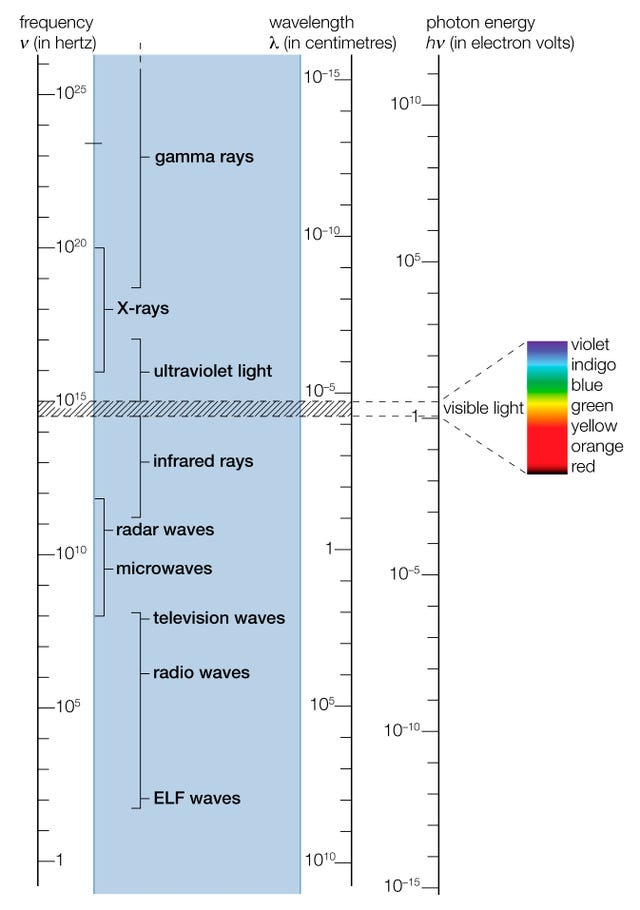
Fortunately, telescopes allow us to see what would otherwise remain hidden. To perceive gas clouds between stars and galaxies, we use detectors that can capture infrared wavelengths. Super-hot stars require instruments that see short, ultraviolet wavelengths. To see the gas clouds between galaxies, we need X-ray detectors.
We’ve been using telescopes designed to reveal the invisible parts of the cosmos for more than 60 years. Because Earth’s atmosphere absorbs most wavelengths of light, many of our telescopes must observe the cosmos from orbit or outer space.
Here’s a snapshot of how we use specialized detectors to explore how light travels across the universe.
Infrared Waves
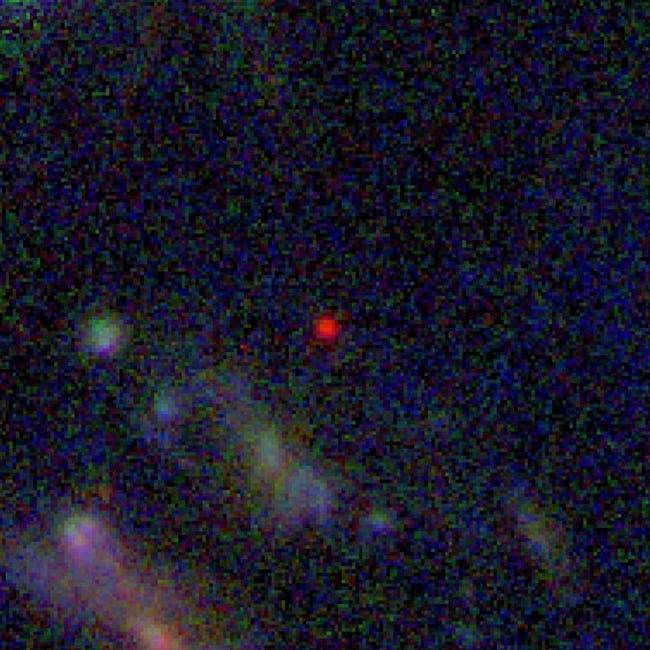
We can’t see infrared waves, but we can feel them as heat . A sensitive detector like the James Webb Space Telescope can discern this thermal energy from far across the universe. But we use infrared in more down-to-Earth ways as well. For example, remote-control devices work by sending infrared signals at about 940 nanometers to your television or stereo. These heat waves also emanate from incubators to help hatch a chick or keep a pet reptile warm. As a warm being, you radiate infrared waves too; a person using night vision goggles can see you, because the goggles turn infrared energy into false-color optical energy that your eyes can perceive. Infrared telescopes let us see outer space in a similar way.
Astronomers began the first sky surveys with infrared telescopes in the 1960s and 1970s. Webb , launched in 2021, takes advantage of the infrared spectrum to probe the deepest regions of the universe. Orbiting the sun at a truly cold expanse—about one million miles from Earth—Webb has three infrared detectors with the ability to peer farther back in time than any other telescope has so far.
Its primary imaging device, the Near Infrared Camera (NIRCam), observes the universe through detectors tuned to incoming wavelengths ranging from 0.6 to 5 microns, ideal for seeing light from the universe’s earliest stars and galaxies. Webb’s Mid-Infrared Instrument (MIRI) covers the wavelength range from 5 to 28 microns, its sensitive detectors collecting the redshifted light of distant galaxies. Conveniently for us, infrared passes more cleanly through deep space gas and dust clouds, revealing the objects behind them; for this and many other reasons, the infrared spectrum has gained a crucial foothold in our cosmic investigations. Earth-orbiting satellites like NASA’s Wide Field Infrared Survey Telescope ( WFIRST ) observe deep space via longer infrared wavelengths, too.
Yet, when stars first form, they mostly issue ultraviolet light . So why don’t we use ultraviolet detectors to find distant galaxies? It’s because the universe has been stretching since its beginning, and the light that travels through it has been stretching, too; every planet, star, and galaxy continually moves away from everything else. By the time light from GLASS-z13—formed 300 million years after the Big Bang—reaches our telescopes, it has been traveling for more than 13 billion years , a vast distance all the way from a younger universe. The light may have started as ultraviolet waves, but over vast scales of time and space, it ended up as infrared. So, this fledgling galaxy appears as a red dot to NIRCam. We are gazing back in time at a galaxy that is rushing away from us.
Radio Waves
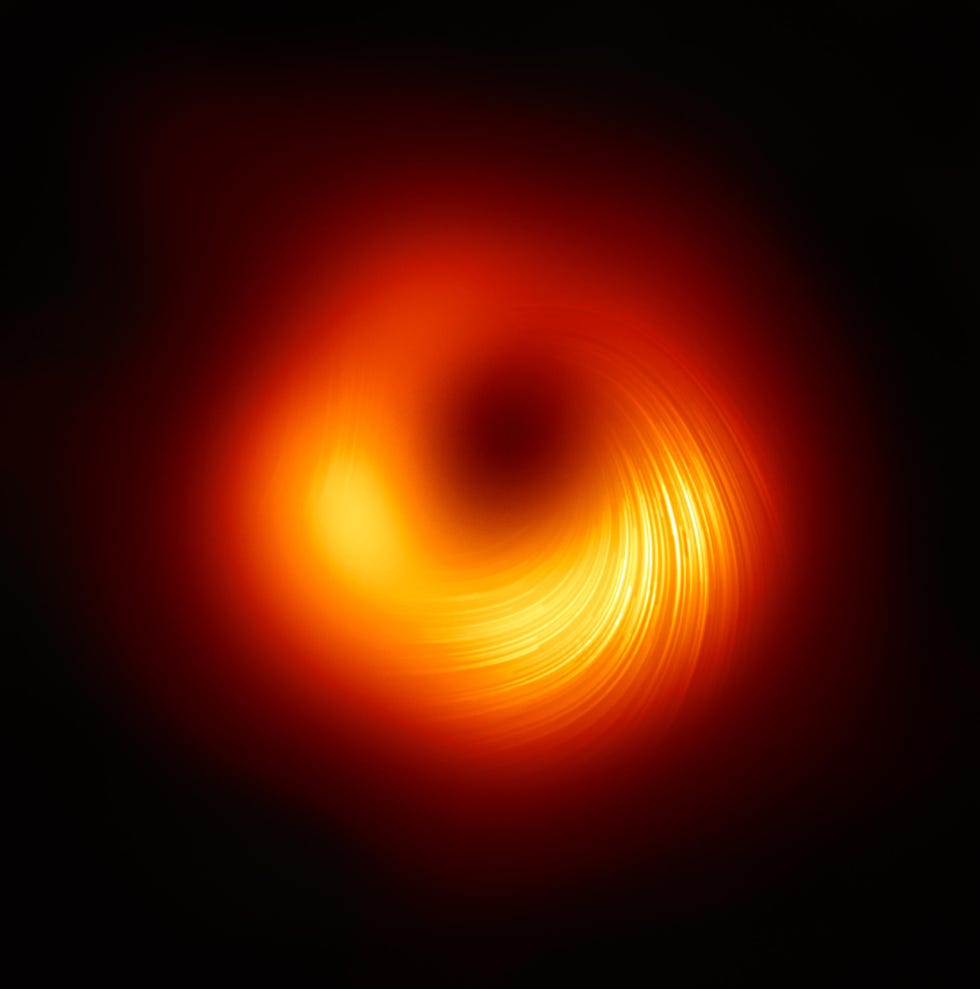
If we could see the night sky only through radio waves, we would notice swaths of supernovae , pulsars, quasars, and gassy star-forming regions instead of the usual pinprick fairy lights of stars and planets.
Tools like the Arecibo Observatory in Puerto Rico can do the job our eyes can’t: detect some of the longest electromagnetic waves in the universe. Radio waves are typically the length of a football field, but they can be even longer than our planet’s diameter. Though the 1,000-foot-wide dish at Arecibo collapsed in 2020 due to structural problems, other large telescopes carry on the work of looking at radio waves from space. Large radio telescopes are special because they actually employ many smaller dishes, integrating their data to produce a really sharp image.
Unlike optical astronomy, ground-based radio telescopes don’t need to contend with clouds and rain. They can make out the composition, structure, and motion of planets and stars no matter the weather. However, the dishes of radio telescopes need to be much larger than optical ones to generate a comparable image, since radio waves are so long. The Parkes Observatory’s dish is 64 meters wide, but its imaging is comparable to a small backyard optical telescope, according to NASA .
Eight different radio telescopes all over the world coordinated their observations for the Event Horizon Telescope in 2019 to put together the eye-opening image of a black hole in the heart of the M87 galaxy (above).
Ultraviolet Waves
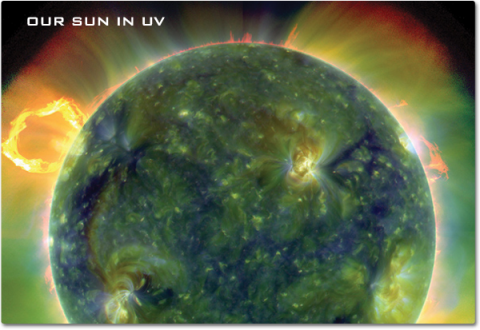
You may be most familiar with ultraviolet, or UV rays, in warnings to use sunscreen . The sun is our greatest local emitter of these higher-frequency, shorter wavelengths just beyond the human visible spectrum, ranging from 100 to 400 nanometers. The Hubble Space Telescope has been our main instrument for observing UV light from space, including young stars forming in Spiral Galaxy NGC 3627, the auroras of Jupiter, and a giant cloud of hydrogen evaporating from an exoplanet that is reacting to its star’s extreme radiation.
Our sun and other stars emit a full range of UV light, telling astronomers how relatively hot or cool they are according to the subdivisions of ultraviolet radiation: near ultraviolet, middle ultraviolet, far ultraviolet, and extreme ultraviolet. Applying a false-color visible light composite lets us see with our own eyes the differences in a star’s gas temperatures.
Hubble’s Wide Field Camera 3 (WFC3) breaks down ultraviolet light into specific present colors with filters. “Science visuals developers assign primary colors and reconstruct the data into a picture our eyes can clearly identify,” according to the Hubble website . Using image-processing software, astronomers and even amateur enthusiasts can turn the UV data into images that are not only beautiful, but also informative.
X-Ray Light
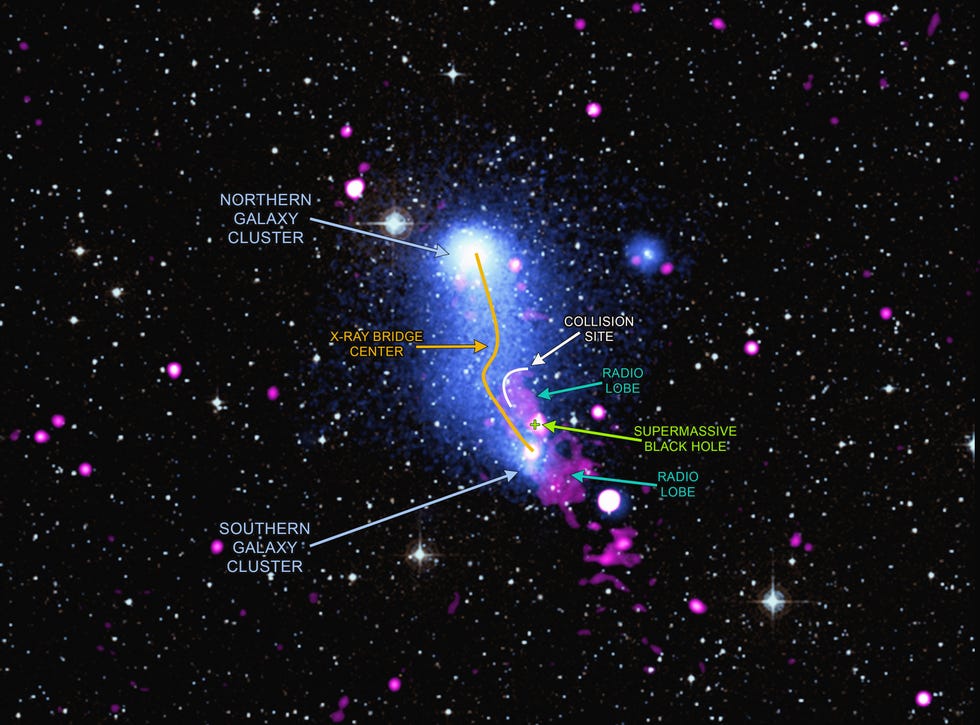
Since 1999, the orbiting Chandra X-Ray Observatory is the most sensitive radio telescope ever built. During one observation that lasted a few hours, its X-ray vision saw only four photons from a galaxy 240 million light-years away, but it was enough to ascertain a novel type of exploding star . The observatory, located 86,500 miles above Earth, can produce detailed, full-color images of hot X-ray-emitting objects, like supernovas, clusters of galaxies and gases, and jets of energy surrounding black holes that are millions of degrees Celsius. It can also measure the intensity of an individual X-ray wavelength, which ranges from just 0.01 to 10 nanometers. Its four sensitive mirrors pick up energetic photons and then electronic detectors at the end of a 30-foot optical apparatus focus the beams of X-rays.
Closer to home, the Aurora Borealis at the poles emits X-rays too. And down on Earth, this high-frequency, low-wavelength light passes easily through the soft tissue of our bodies, but not our bones, yielding stellar X-ray images of our skeletons and teeth.
Visible Light

Visible color gives astronomers essential clues to a whole world of information about a star, including temperature, distance, mass, and chemical composition. The Hubble Telescope, perched 340 miles above our planet, has been a major source of visible light images of the cosmos since 1990.
Hotter objects, like young stars, radiate energy at shorter wavelengths of light; that’s why younger stars at temperatures up to 12,000 degrees Celsius, like the star Rigel, look blue to us. Astronomers can also tell the mass of a star from its color. Because mass corresponds to temperature, observers know that hot blue stars are at least three times the mass of the sun. For instance, the extremely hot, luminous blue variable star Eta Carina’s bulk is 150 times the mass of our sun, and it radiates 1,000,000 times our sun’s energy.
Our comparatively older, dimmer sun is about 5,500 degrees Celsius, so it appears yellow. At the other end of the scale, the old star Betelgeuse has been blowing off its outer layer for the past few years, and it looks red because it’s only about 3,000 degrees Celsius.
A View of Earth
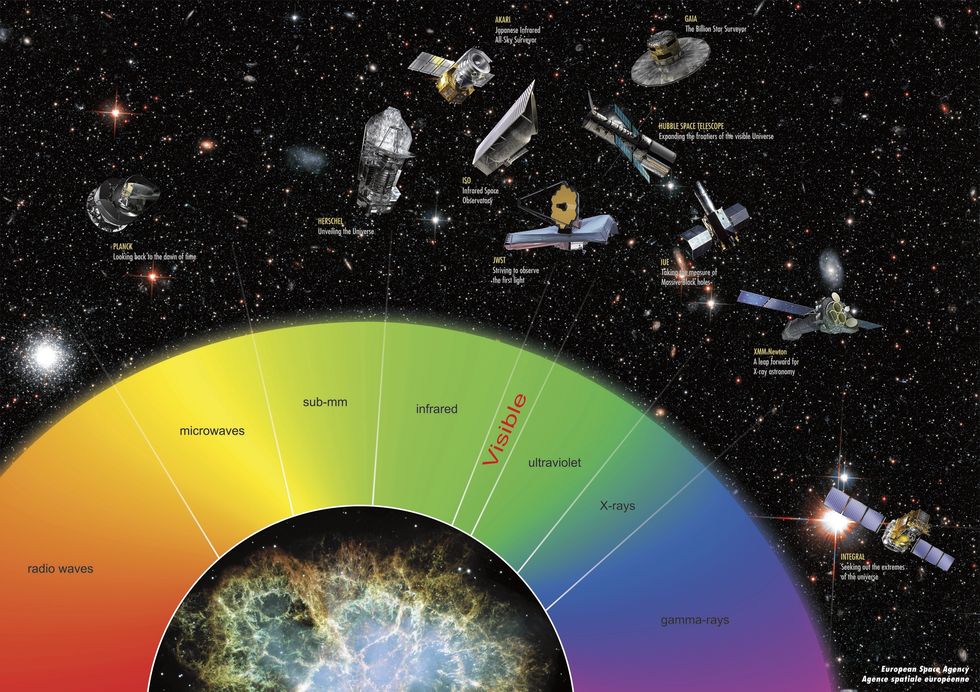
Scientists use different wavelengths of light to study phenomena closer to home, too.
Detectors in orbit can distinguish between geophysical and environmental features on Earth’s changing surface, such as volcanic action. For example, infrared light used alongside visible light detection reveals areas covered in snow, volcanic ash, and vegetation. The Moderate Resolution Imaging Spectroradiometer ( MODIS ) infrared instrument onboard the Aqua and Terra satellites monitors forest fire smoke and locates the source of a fire so humans don’t have to fly through smoke to evaluate the situation.
Next year, a satellite will be launched to gauge forest biomass using a special radar wavelength of about 70 centimeters that can penetrate the leafy canopy.
💡 Why is the sky blue? During the day, oxygen and nitrogen in Earth’s atmosphere scatters electromagnetic energy at the wavelengths of blue light (450–485 nanometers). At sunset, the sun’s light makes a longer journey through the atmosphere before greeting your eyes. Along the way, more of the sun’s light is scattered out of the blue spectrum and deeper into yellow and red.
Before joining Popular Mechanics , Manasee Wagh worked as a newspaper reporter, a science journalist, a tech writer, and a computer engineer. She’s always looking for ways to combine the three greatest joys in her life: science, travel, and food.

.css-cuqpxl:before{padding-right:0.3125rem;content:'//';display:inline;} Pop Mech Pro: Science .css-xtujxj:before{padding-left:0.3125rem;content:'//';display:inline;}

How Vacuum Energy Could Help Us Reach Light Speed

Could the Chair You Sit on Have a Soul?

Here’s How We Could Live in Trees

The Engine Driving Our Oceans Could Die by 2100

Can AI Help Solve Math’s Thorniest Mysteries?

You Can Give Your Body Back to Nature When You Die

How Does UFO Footage Play Tricks on Your Mind?

Why Doesn’t the Living Human Body ‘Go Bad’?

Is the Room-Temperature Superconductor Back?

What 9 Months on a Cruise Ship Can Do to You

Scientists Just Figured Out Why Pee is Yellow
National Aeronautics and Space Administration
Goddard space flight center, imagine the universe, astronomer's toolbox.
- Cosmic Objects
- Big Questions
- Featured Science
- Observatories
- Scientist Profiles
- You Be the Astrophysicist
- The Cosmic Distance Scale
- Lesson Plans
- Ask an Astrophysicist
- Other Resources
- News #include virtual="/news/newsNav.html"
Additional Links
Related Topics
For Educators
Cosmic Rays
Cosmic rays provide one of our few direct samples of matter from outside the solar system. They are high energy particles that move through space at nearly the speed of light . Most cosmic rays are atomic nuclei stripped of their atoms with protons ( hydrogen nuclei) being the most abundant type but nuclei of elements as heavy as lead have been measured. Within cosmic-rays however we also find other sub-atomic particles like neutrons electrons and neutrinos .
Since cosmic rays are charged – positively charged protons or nuclei, or negatively charged electrons – their paths through space can be deflected by magnetic fields (except for the highest energy cosmic rays). On their journey to Earth, the magnetic fields of the galaxy , the solar system, and the Earth scramble their flight paths so much that we can no longer know exactly where they came from. That means we have to determine where cosmic rays come from by indirect means.
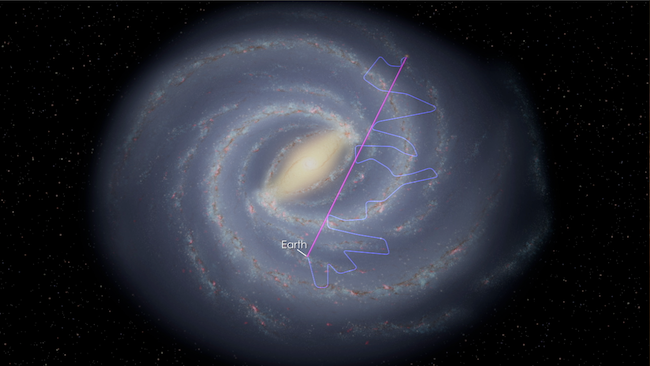
Because cosmic rays carry electric charge, their direction changes as they travel through magnetic fields. By the time the particles reach us, their paths are completely scrambled, as shown by the blue path. We can't trace them back to their sources. Light travels to us straight from their sources, as shown by the purple path. (Credit: NASA's Goddard Space Flight Center)
One way we learn about cosmic rays is by studying their composition. What are they made of? What fraction are electrons? protons (often referred to as hydrogen nuclei)? helium nuclei? other nuclei from elements on the periodic table? Measuring the quantity of each different element is relatively easy, since the different charges of each nucleus give very different signatures. Harder to measure, but a better fingerprint, is the isotopic composition (nuclei of the same element but with different numbers of neutrons). To tell the isotopes apart involves, in effect, weighing each atomic nucleus that enters the cosmic ray detector.
All of the natural elements in the periodic table are present in cosmic rays. This includes elements lighter than iron, which are produced in stars , and heavier elements that are produced in violent conditions, such as a supernova at the end of a massive star's life .
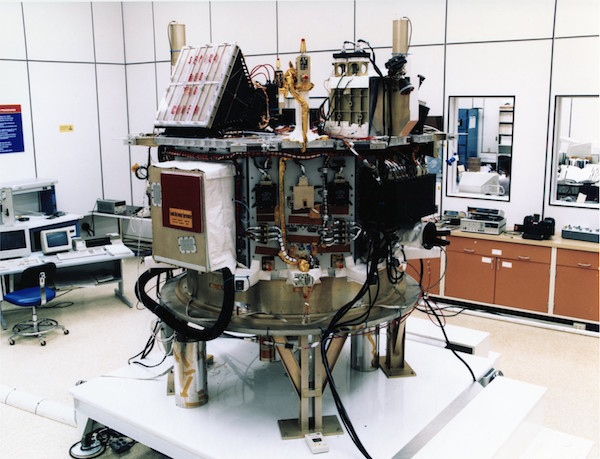
The Cosmic Ray Isotope Spectrometer (CRIS - the box on the left of the spacecraft, with a yellow label) on the Advanced Composition Explorer (ACE) spacecraft provides measurements of the isotopes of galactic cosmic ray nuclei ranging from helium to zinc. ACE launched in August 1997. (Credit: NASA/Johns Hopkins University Applied Physics Laboratory)
Detailed differences in their abundances can tell us about cosmic ray sources and their trip through the galaxy. About 90% of the cosmic ray nuclei are hydrogen (protons), about 9% are helium (alpha particles), and all of the rest of the elements make up only 1%. Even in this one percent there are very rare elements and isotopes. Elements heavier than iron are significantly more rare in the cosmic-ray flux but measuring them yields critical information to understand the source material and acceleration of cosmic rays
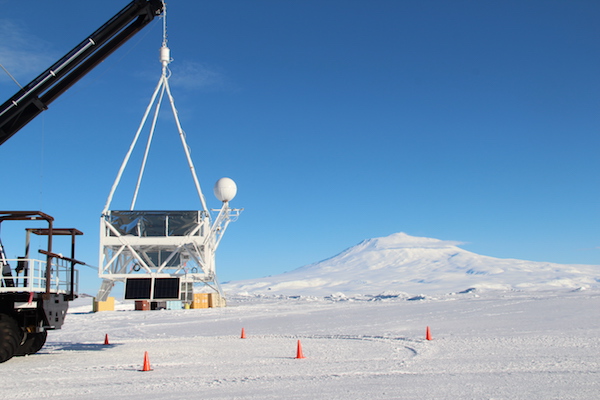
SuperTIGER hanging from the launch vehicle just before its December 2012 launch with Mount Erebus in the background. SuperTIGER is a cosmic-ray balloon instrument measuring cosmic-rays heavier than iron to explore the source of cosmic rays and their acceleration sites. SuperTIGER's first flight lasted for 55 days, a record in duration for an Antarctic long duration scientific balloon payload. (Credit: Ryan Murphy/Washington University)
Even if we can't trace cosmic rays directly to a source, they can still tell us about cosmic objects. Most galactic cosmic rays are probably accelerated in the blast waves of supernova remnants. The remnants of the explosions – expanding clouds of gas and magnetic field – can last for thousands of years, and this is where cosmic rays are accelerated. Bouncing back and forth in the magnetic field of the remnant randomly lets some of the particles gain energy, and become cosmic rays. Eventually they build up enough speed that the remnant can no longer contain them, and they escape into the galaxy.
Cosmic rays accelerated in supernova remnants can only reach a certain maximum energy, which depends on the size of the acceleration region and the magnetic field strength. However, cosmic rays have been observed at much higher energies than supernova remnants can generate, and where these ultra-high-energies come from is an open big question in astronomy . Perhaps they come from outside the galaxy, from active galactic nuclei , quasars or gamma ray bursts. Or perhaps they're the signature of some exotic new physics: superstrings, exotic dark matter , strongly-interacting neutrinos, or topological defects in the very structure of the universe . Questions like these tie cosmic-ray astrophysics to basic particle physics and the fundamental nature of the universe.
Confined by a magnetic field in supernova remnants, high-energy particles move around randomly. Sometimes they cross the shock wave . With each round trip, they gain about 1 percent of their original energy. After dozens to hundreds of crossings, the particle is moving near the speed of light and is finally able to escape. (Credit: NASA's Goddard Space Flight Center)
Text updated: July 2017

- Project Leader: Dr. Barbara Mattson
- Web Curator: J.D. Myers
- Responsible NASA Official : Dr. Andy Ptak
- Privacy Policy & Important Notices
- Page Last Updated: 06-Sep-2017
If you're seeing this message, it means we're having trouble loading external resources on our website.
If you're behind a web filter, please make sure that the domains *.kastatic.org and *.kasandbox.org are unblocked.
To log in and use all the features of Khan Academy, please enable JavaScript in your browser.
Physics library
Course: physics library > unit 14, light: electromagnetic waves, the electromagnetic spectrum and photons.
- Electromagnetic waves and the electromagnetic spectrum
- Polarization of light, linear and circular
Introduction to electromagnetic waves
Basic properties of waves: amplitude, wavelength, and frequency, example: calculating the wavelength of a light wave, the electromagnetic spectrum, quantization of energy and the dual nature of light, example: calculating the energy of a photon, attributions.
- “ Electromagnetic Radiation ” from UC Davis ChemWiki, CC BY-NC-SA 3.0
Additional References
Want to join the conversation.
- Upvote Button navigates to signup page
- Downvote Button navigates to signup page
- Flag Button navigates to signup page

Does Light Travel Forever?
Most recent answer: 01/23/2013
Hi Raja, Good question. First, let's think about why sound does not travel forever. Sound cannot travel through empty space; it is carried by vibrations in a material, or medium (like air, steel, water, wood, etc). As the particles in the medium vibrate, energy is lost to heat, viscous processes, and molecular motion. So, the sound wave gets smaller and smaller until it disappears. In contrast, light waves can travel through a vacuum, and do not require a medium. In empty space, the wave does not dissipate (grow smaller) no matter how far it travels, because the wave is not interacting with anything else. This is why light from distant stars can travel through space for billions of light-years and still reach us on earth. However, light can also travel within some materials, like glass and water. In this case, some light is absorbed and lost as heat, just like sound. So, underwater, or in our atmosphere, light will only travel some finite range (which is different depending on the properties of the material it travels through). There is one more aspect of wave travel to consider, which applies to both sound and light waves. As a wave travels from a source, it propagates outward in all directions. Therefore, it fills a space given approximately by the surface area of a sphere. This area increases by the square of the distance R from the source; since the wave fills up all this space, its intensity decreases by R squared. This effect just means that the light/sound source will appear dimmer if we are farther away from it, since we don't collect all the light it emits. For example, light from a distant star travels outward in a giant sphere. Only one tiny patch of this sphere of light actually hits our eyes, which is why stars don't blind us! David Schmid
(published on 01/23/2013)
Follow-Up #1: How far does light go?
Light just keeps going and going until it bumps into something. Then it can either be reflected or absorbed. Astronomers have detected some light that has been traveling for more that 12 billion years, close to the age of the universe.
Light has some interesting properties. It comes in lumps called photons. These photons carry energy and momentum in specific amounts related to the color of the light. There is much to learned about light. I suggest you log in to our website and type LIGHT into the search box. Lots of interesting stuff there.
To answer your previous question "Can light go into a black hole?" , the answer is yes.
(published on 12/03/2015)
Follow-Up #2: less than one photon?
Certainly you can run the ouput of a single-photon source through a half-silvered mirror, and get a sort of half-ghost of the photon in two places. If you put ordinary photon detectors in those places, however, each will either detect zero or one. For each source photon, you'll get at most one of the detectors to find it. How does the half-ghost at the other one know whether it's detectably there or not? The name of that mystery is "quantum entanglement". At some level we don't really know the answer.
(published on 02/04/2016)
Follow-Up #3: stars too far away to see?
Most stars are too far for us to see them as individual stars even with our best telescopes. Still, we can get light from them, mixed with light from other stars. If our understanding of the universe is at all right, there are also stars that once were visible from here but now are outside our horizon so no light from them reaches us. It's probable that there are many more stars outside our horizon than inside, maybe infinitely more. It's hard to check, however, what's happening outside our horizon! It's even hard to define what we mean by "now" for things outside the horizon.
(published on 07/22/2016)
Follow-Up #4: light going out to space
Certainly ordinary light travels out to space. That's how spy cameras and such can take pictures of things here on the Earth's surface.
(published on 09/01/2016)
Follow-Up #5: end of the universe?
We don't think there's any "end" in the sense of some spatial boundary. Unless something changes drastically, there also won't be an end in time. The expansion looks like it will go on forever. So that wouldn't give a maximum range.
(published on 03/26/2017)
Follow-Up #6: seeing black holes
In principle a well-aimed beam would loop around the outside of the black hole and return to Earth. There aren't any black holes close enough to make this practical. Instead the bending of light by black holes is observed by their lensing effect on light coming from more distant objects.
The amazing gravitational wave signals observed from merging black holes provide even more direct and convincing proof that black holes exist and follow the laws of General Relativity.
(published on 01/29/2018)
Follow-up on this answer
Related Questions
- Can you use light to attract or repel an item?
- Absorption of short light pulses
- light from Hiroshima
- light dependent switches
- Would a tin-can phone work in space?
- refraction and reflection
- light reflection from glass
- light from old sources
- Seeing reflected and emitted light
- Speed of light in various directions
Still Curious?
Expore Q&As in related categories
- Properties of Light
- Properties of Sound

- Planet Earth
- Strange News
How Do Light Rays Travel In Space
Table of Contents:
Sun makes slow light . a href=”www.
The photons of energy have finally, after 100,000 years, come to the end of their journey inside the Sun. They have now reached a zone which is transparent to light. The photons escape into space, and travel at the classic speed of light — around 300,000 kilometres per second. The very surface of the Sun is called the ‘photosphere’, because that’s where the photons have escaped from.
Video advice: Light traveling to The Earth from the Sun in Real Time
Ever wonder what it would look like from a third world perspective of light particles from our Sun traveling to the Earth in real time? Say no more! The video shows exactly that!

After thousands upon thousands of years, they make their way into what’s called the ‘radiative zone’. The radiative zone is huge — it stretches up from the outer core (that’s at the 24 per cent mark) to about 70 per cent of the way to the surface. It’s called the radiative zone, because here, energy travels by radiation. The gamma rays are still being absorbed and re-radiated, but each time they’re being re-radiated at longer wavelengths. They gradually get converted from gamma rays down to visible light. The temperature in the radiative zone is around 7 million°C near the bottom, and about 2 million°C near the top.
J O Bird BSc, CEng, MIEE, CMath, FIMA, FCollP, MIEIE, P J Chivers BSc, PhD, in Newnes Engineering and Physical Science Pocket Book, 1993.
- Publisher Summary
- The Lens Changes Shape to Focus Near Objects
- LOAD INCREMENTAL APPROACH
Light raysJ O Bird BSc, CEng, MIEE, CMath, FIMA, FCollP, MIEIE, P J Chivers BSc, PhD, in Newnes Engineering and Physical Science Pocket Book, 1993Publisher SummaryThis chapter focuses on light rays and its behavior. Light is an electromagnetic wave and the straight line paths followed by narrow beams of light, along which light energy travels, are called rays. Light always travels in straight lines although its direction can be changed by reflection or refraction. The behavior of light rays may be investigated by using a ray-box. This consists merely of a lamp in a box containing a narrow slit that emits rays of light. There are two laws of reflection, namely, the angle of incidence is equal to the angle of reflection and the incident ray, the normal at the point of incidence, and the reflected ray lie in the same plan. When a ray of light passes from one medium to another, the light undergoes a change in direction. This displacement of light rays is called refraction. In general, when entering a denser medium from a less dense medium, light is refracted toward the normal and when it passes from a dense to a less dense medium, it is refracted away from the normal.
Light from the sun travels through space to Earth’s atmosphere. What will light waves do when they move from empty space into matter made up of different gases? – They slow down, which may cause them to refract. The speed of light in vacuum is the highest possible speed (according to Einstein). It’s ~~300000km//sec When light goes into a denser medium (and any medium is denser than vacuum) it slows down. For instance the speed in air is: 1/1.000293=99.97% of this speed, which seems like almost the same, but it isn’t quite so. In water it goes down to ~~75% and in glass (depending on the sort of glass) to 2//3 or even 1//2 of the speed in vacuum. Diamond even reduces the speed to about 40%. If light hits a boundary (vacuum to denser) at an angle it will bend, or be refracted. Since not all colours have the same retardation, red light tends to be bent less than violet, with the other colours of the spectrum somewhere in between. This – in our daily life – creates rainbows.
Video advice: How Light Travels Through Time
If you shine a light at a spaceship traveling at half the speed of light, will the way they see the light be different? If you were to travel faster than the speed of light, would you age slower?

If light hits a boundary (vacuum to denser) at an angle it will bend, or be refracted. Since not all colours have the same retardation, red light tends to be bent less than violet, with the other colours of the spectrum somewhere in between. This – in our daily life – creates rainbows.
Quick Answer: How Does Light Rays Travel
Light rays Light always travels in straight lines although its direction can be changed by reflection or refraction. When a ray of light passes from one medium to another, the.
Electromagnetic surf is waves that may traverse matter or through empty space. However, when light travels in matter, it interacts using the atoms and molecules within the material and slows lower. Consequently, light travels fastest in empty space, and travels slowest in solids.
How does the light ray travel short answer? Do light rays move? Where does light always travel? Does light travel instantaneously? Is light a ray or particle? How does light go through glass? How does the light have to enter the glass? Why do waves move light? How does light travel through empty space? How does light travel without a medium? How fast is the speed of dark? How does light have no mass? Does time stop in a black hole? Is light invisible? How is light made? What exactly is light? Do mirrors absorb light? Can light pass through mirror? Does light go through water?
Video advice: Science Video for Kids: How Does Light Travel?
Light travels in waves. Light rays cannot bend to go around something. The light rays are either reflected, absorbed, or refracted. Watch out this video to understand these terms in detail! #Education #Science #Kids

Can light rays travel through space?
Like all forms of electromagnetic waves, light can travel through empty space, as well as through matter . Light can be absorbed. Absorbed light energy is converted into some other form, such as thermal or heat energy.
How does light can travel in space where no matter exists?
So the answer to your question is simply, light travels through the vacuum the same way matter does .
How does light travel through the vacuum of space?
Light travels as a wave. But unlike sound waves or water waves, it does not need any matter or material to carry its energy along. ... Nothing travels faster than light energy. It speeds through the vacuum of space at 186,400 miles (300,000 km) per second .
Why is there no light in space?
Because space is a near-perfect vacuum — meaning it has exceedingly few particles — there's virtually nothing in the space between stars and planets to scatter light to our eyes. And with no light reaching the eyes, they see black. —What color is the sunset on other planets?
How does the light from the Sun travel to Earth?
The Sun's energy gets to the Earth through radiation , which you can prove just by standing outside and letting the sun's rays warm your face on a sunny day. ... The energy lost is emitted as light or electromagnetic radiation. Energy that is absorbed by an atom causes its electrons to "jump" up to higher energy levels.
Related Articles:
- Can Light Travel Through Space
- How Fast Does Light Travel Through Space
- Galactic Cosmic Sun rays May Cause Dementia-Like Signs and symptoms During Extended Space Travel
- Warp Drives and Negative Energy: Physicists Give Likelihood of Faster-Than-Light Space Travel a lift
- Sci-fi or Fact? Is Quicker-Than-Light Travel Possible?
- Can Matter Travel at Light Speed?
Science Journalist
Science atlas, our goal is to spark the curiosity that exists in all of us. We invite readers to visit us daily, explore topics of interest, and gain new perspectives along the way.
You may also like

What Do You Need Ti Di Tio Learn About Geology

Why Do Golf Balls Have Dimples Physics

How To Reduce Percentage Uncertainty In Physics
Add comment, cancel reply.
Your email address will not be published. Required fields are marked *
Save my name, email, and website in this browser for the next time I comment.
Recent discoveries

What Is The Definition Of Isotope In Chemistry

What Kind Of Math Is Used In Engineering

What Does The Triangle Symbol Mean In Science

Why Is Innovation Necessary To Make Franchising Successful
- Animals 3041
- Astronomy 8
- Biology 2281
- Chemistry 482
- Culture 1333
- Health 8466
- History 2152
- Physics 913
- Planet Earth 3239
- Science 2158
- Strange News 1230
- Technology 3625
Random fact

Is Innovation Encougaged At Amazon
Gamma rays: Everything you need to know about these powerful packets of energy
Gamma rays can only be detected by sensors made of dense metals and takes over six feet (1.8 meters) of concrete to block.

How were gamma rays discovered?
How to stop gamma rays, are gamma rays dangerous, gamma-ray astronomy, gamma-ray bursts, additional resources.
Gamma rays are high-energy photons produced by some of the most violent events in the universe.
Photons of light are massless particles that are essentially packets of energy. Because of a quantum-mechanical phenomenon known as wave-particle duality , particles can behave like waves, and photons are no different. Photons have wavelengths, and the amplitude of their wavelength determines where they sit on the electromagnetic spectrum . Radio and microwave photons sit at the lower energy, longer wavelength end of the spectrum, while in the shorter wavelength, higher-energy regime are photons of ultraviolet, X-rays and the most energetic of them all with the shortest wavelengths: gamma rays.
Gamma rays have wavelengths shorter than 10^-11 meters and frequencies above 30 x 10^18 hertz. The European Space Agency describes how gamma-ray photons have energies in excess of 100,000 electronvolts (eV). We can compare this to X-rays, which NASA describes as having energies between 100 eV and 100,000 eV , and optical photons that we can see with our eyes, which are about 1 eV.
Related: What is the cosmic microwave background?
On Earth, gamma rays are produced by radioactive decay, nuclear weapons and lightning, while in space they are produced by violent, high-energy sources such as solar flares , quasars , black holes tearing stars apart , black-hole accretion disks, exploding stars and the strong gravitational environments of neutron stars .
At the turn of the twentieth century, two forms of radiation emitted by decaying atoms were known, namely alpha particles (which are helium nuclei) and beta particles (which are electrons and positrons).
However, when the French chemist Paul Villard began experimenting with the radioactive element radium, which had been discovered two years prior by Marie and Pierre Curie , he noticed that the ionizing radiation produced by the decay of radium packed a harder punch than either alpha or beta particles.
This radiation received its name — gamma-rays — simply because gamma is the third letter in the Greek alphabet after alpha and beta. Unbeknownst to Villard and his cohorts in the early 1900s, the key difference between gamma rays and alpha/beta particles is that gamma rays are a form of light, whereas alpha and beta particles are made of matter.

To block gamma rays requires a dense material, and the thickness of that material depends on the substance. To reduce the strength of incoming gamma rays by a billion, you need 13.8 feet (4.2 meters) of water, 6.6 feet (2 m) of concrete or 1.3 feet (0.39 m) of lead, according to the radiation protection solution website StemRad .
This poses a problem for gamma-ray telescopes, such as NASA's Fermi Space Telescope . Ordinary telescopes like the Hubble Space Telescope use mirrors and lenses to collect and focus light, but gamma rays will simply pass straight through an ordinary telescope. Instead, gamma-ray telescopes have to employ other means.
On the Fermi Space Telescope, a gamma-ray photon will pass through a device called the Anti-coincidence Detector, which blocks cosmic rays that might give a false signal, according to NASA . The gamma-ray is then absorbed by one of 16 sheets of tungsten, a material that is dense enough to stop gamma rays.
By interacting with the tungsten, the gamma-ray is converted into an electron and a positron (the antimatter or antiparticle counterpart of an electron), the paths of which are read by a tracker, which is a module of silicon strips interweaved by tungsten foil that can determine the direction that the gamma-ray came from in space, based on the trajectory of the electron and the positron.
Finally, the electron and then positron have their energies measured by a calorimeter — a device that measures the energy of a particle by absorbing it — made from cesium iodide, and therefore the energy of the gamma-ray can be determined.
Because of their high energy, gamma rays are ionizing, meaning they can dislodge electrons from atoms , ultimately damaging living cells and causing a hazard to health. However, as with all radiation, it depends upon the dose that you receive.
In small doses, very carefully targeted to limit exposure, they can be used safely as a medical diagnostic tool, or even to kill cancerous cells (ironic since exposure to radiation including gamma rays can cause cancer). In particular, one tool used by doctors is the ' Gamma Knife ', which is an ultra-precise form of surgery in which a beam of gamma rays cuts away diseased brain cells and can even penetrate deep into the brain without damaging the exterior lobes.
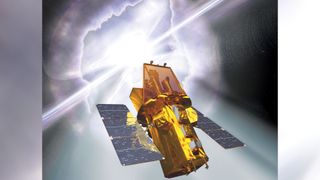
Given their ionizing power, it's fortunate that Earth's atmosphere is able to block gamma rays from space. For astronomers, however, that's unfortunate, because it means that to conduct gamma-ray astronomy observatories have to either be built on mountaintops where the atmosphere is thinner or sent into space.
The first gamma-ray space telescope was launched in 1961 on the NASA Explorer 11 satellite, but things didn't really begin to kick off until the late 1960s and early 1970s with a major finding, and it wasn't even an astronomical telescope that made the discovery.
Over the years there have been many observatories, both on the ground and in space, that have been designed to observe cosmic gamma-ray radiations. In 1990, NASA launched the Compton Gamma-Ray Observatory as the gamma-ray counterpart to the Hubble Space Telescope. The Compton Gamma-Ray Observatory explored the cosmos from 1991 until 2000. The aforementioned BeppoSAX was a joint Italian–Dutch mission that operated between 1996 and 2003, while NASA launched HETE-2 (the High-Energy Transient Explorer; HETE-1 had previously failed in orbit) that tracked down many GRBs between 2000 and 2008.
Currently, as of the end of 2022, several satellites , observatories and telescopes continue to conduct gamma-ray astronomy both on Earth and in space. NASA's Swift satellite , launched in 2004, combines both X-ray and gamma-ray observations, as does Italy's AGILE satellite launched in 2007. In 2002, the European Space Agency launched INTEGRAL , the International Gamma-Ray Astrophysics Laboratory.. The current most sophisticated gamma-ray space telescope is Fermi, which NASA launched in 2008.
Meanwhile, on the ground, there are several gamma-ray observatories including VERITAS (Very Energetic Radiation Imaging Telescope Array System) at the Fred Lawrence Whipple Observatory in Arizona and HESS (High Energy Stereoscopic System) in Namibia.

In 1963, the Soviet Union, the United Kingdom and the United States signed a nuclear test ban treaty that prohibited the world's superpowers from testing any nuclear devices in the atmosphere or in space. However, the U.S. was suspicious that the Soviet Union wouldn't adhere to the treaty, so they launched the Vela series of satellites to watch for any pulses of gamma-ray radiation that could be coming from secretive nuclear detonations. As it happened, gamma rays were detected, but from space: random blasts of powerful gamma-ray energy that seemed to be coming from all around the Earth. But how far away were these gamma-ray bursts ?
Related: Most powerful gamma-ray burst ever seen could help reveal how black holes are born
If these gamma-ray bursts, which are abbreviated to GRBs for short, were coming from our galaxy, then astronomers would detect them mostly in the plane of the Milky Way . Instead, they were spread all over the sky, it could mean only one of two things. Either they were very close, within our solar system , or they were very far away, beyond our galaxy. A special debate was even convened in 1995, echoing a similar ' Great Debate ' in 1920 between Harlow Shapley and Heber D. Curtis that discussed the size of our galaxy based on the distribution of globular clusters .
In the 1995 debate , chaired by Martin Rees, astronomer Bohdan Paczynski of Princeton University argued that GRBs came from very far away, while Donald Lamb of the University of Chicago reasoned that GRBs must be from close by because the energy required for them to be billions of light-years away would contravene the laws of physics.
Just two years later astronomers had their answer when the BeppoSAX satellite detected a gamma-ray burst that the William Herschel Telescope in the Canary Islands was able to quickly follow up on, in the process detecting the faint afterglow of whatever explosion had created the GRB. Measuring the redshift of the afterglow's light revealed it to have come from six billion light-years away. Bohdan Paczynski was right!
There are two main types of GRB. One type is called short GRBs which last just fractions of a second, while the other kind is known as the long GRBs, and can last many seconds up to an hour. Short GRBS are emitted during the merger of two neutron stars , while long GRBs are the death cries of rare, massive stars .
Physicists Andrew MacFadyen and Stan Woosley of the University of California, Santa Cruz, developed a model to explain how stars could explode and produce long GRBs without breaking the laws of physics. When a massive star with 50–100 times the mass of the sun reaches the end of its life, the star begins to collapse in on its core, and if the star is rotating fast enough, the energy within the collapsing layers rebounds off the core and is blasted out in two jets that move at almost the speed of light and blow the star apart. Charged particles within these jets spiral around powerful magnetic fields and produce something called synchrotron radiation, in the form of the gamma rays that we observe. Because the gamma rays are only released in the direction of the jets, and not in all directions at once, the total energy released does not contravene the laws of physics.
Learn more about ionizing radiation with the United States Environment Protection Agency (EPA) , and the American Cancer Society . Explore gamma rays in more detail in a tour of the electromagnetic spectrum with NASA Science.
Follow Keith Cooper on Twitter @21stCenturySETI. Follow us on Twitter @Spacedotcom and on Facebook .
Bibliography
Flash! The Hunt for the Biggest Explosions in the Universe by Govert Schilling (Cambridge University Press, 2002)
The Biggest Bangs: The Mystery of Gamma-Ray Bursts, The Most Violent Explosions in the Universe by Jonathan Katz (Oxford University Press, 2002)
Join our Space Forums to keep talking space on the latest missions, night sky and more! And if you have a news tip, correction or comment, let us know at: [email protected].
Get the Space.com Newsletter
Breaking space news, the latest updates on rocket launches, skywatching events and more!

Keith Cooper is a freelance science journalist and editor in the United Kingdom, and has a degree in physics and astrophysics from the University of Manchester. He's the author of "The Contact Paradox: Challenging Our Assumptions in the Search for Extraterrestrial Intelligence" (Bloomsbury Sigma, 2020) and has written articles on astronomy, space, physics and astrobiology for a multitude of magazines and websites.
A 'snowball fight' may help scientists find life on Jupiter's moon Europa
Arrokoth the 'space snowman' and other Kuiper Belt objects may be packed with ancient ice
The total solar eclipse 2024 is happening today! Here's what you need to know
- larbud Interesting; no mention of 1859. Reply
- billslugg The 1859 Carrington event was caused by a stream of charged particles from a solar flare. Any gamma rays emitted would have been blocked by the Earth's atmosphere. Reply
- View All 2 Comments
Most Popular
By Tantse Walter February 06, 2024
By Fran Ruiz January 29, 2024
By Fran Ruiz January 26, 2024
By Conor Feehly January 05, 2024
By Keith Cooper December 22, 2023
By Fran Ruiz December 20, 2023
By Fran Ruiz December 19, 2023
By Fran Ruiz December 18, 2023
By Tantse Walter December 18, 2023
By Robert Lea December 05, 2023
By Robert Lea December 04, 2023
- 2 Maya nobility performed bloodletting sacrifices to strengthen a 'dying' sun god during solar eclipses
- 3 Coding the cosmos: Building an app for the total solar eclipse 2024 (op-ed)
- 4 My dogs and I watched the 2017 total solar eclipse, but we won't travel for this one
- 5 SpaceX rocket launches 11 satellites, including one for South Korea, on Bandwagon-1 rideshare flight (photos)
Organizations
Space Weather Prediction Center
National Oceanic and Atmospheric Administration
- Earth's Climate
- Electric Power Transmission
- GPS Systems
- HF Radio Communications
- Satellite Communications
- Satellite Drag
- Commercial Service Providers
- Federal Agencies
- International Organizations
- International Service Providers
- Space Weather Research
- Coronal Holes
- Coronal Mass Ejections
- Earth's Magnetosphere
- F10.7 cm Radio Emissions
Galactic Cosmic Rays
- Geomagnetic Storms
- Ionospheric Scintillation
- Radiation Belts
- Solar EUV Irradiance
- Solar Flares (Radio Blackouts)
- Solar Radiation Storm
- Sunspots/Solar Cycle
- Total Electron Content
- NOAA Space Weather Scales
- Customer Needs & Requirements Study
- 27-Day Outlook of 10.7 cm Radio Flux and Geomagnetic Indices
- 3-Day Forecast
- 3-Day Geomagnetic Forecast
- Forecast Discussion
- Predicted Sunspot Numbers and Radio Flux
- Report and Forecast of Solar and Geophysical Activity
- Solar Cycle Progression
- Space Weather Advisory Outlook
- USAF 45-Day Ap and F10.7cm Flux Forecast
- Weekly Highlights and 27-Day Forecast
- Forecast Verification
- Geoalert - Alerts, Analysis and Forecast Codes
- Geophysical Alert
- Solar and Geophysical Event Reports
- USAF Magnetometer Analysis Report
- Aurora - 30 Minute Forecast
- CTIPe Total Electron Content Forecast
- D Region Absorption Predictions (D-RAP)
- Geoelectric Field Models (US Canada 1D & 3D EMTF CONUS)
- Geospace Geomagnetic Activity Plot
- Geospace Ground Magnetic Perturbation Maps
- Geospace Magnetosphere Movies
- North American (US Region) Total Electron Content
- North American Total Electron Content
- Relativistic Electron Forecast Model
- STORM Time Empirical Ionospheric Correction
- WSA-Enlil Solar Wind Prediction
- Boulder Magnetometer
- GOES Electron Flux
- GOES Magnetometer
- GOES Proton Flux
- GOES Solar Ultraviolet Imager (SUVI)
- GOES X-ray Flux
- LASCO Coronagraph
- Planetary K-index
- Real Time Solar Wind
- Satellite Environment
- Solar Synoptic Map
- Space Weather Overview
- Station K and A Indices
- Solar & Geophysical Activity Summary
- Solar Region Summary
- Summary of Space Weather Observations
- Alerts, Watches and Warnings
- Notifications Timeline
- ACE Real-Time Solar Wind
- Aurora Viewline for Tonight and Tomorrow Night
- Electric Power Community Dashboard
- International Civil Aviation Organization (ICAO) Space Weather Advisory
- Solar TErrestrial RElations Observatory (STEREO)
- Data Access
- Electric Power
- Emergency Management
- Global Positioning System
- Space Weather Enthusiasts
- Education and Outreach
- News Archive
- Annual Meeting
- About Space Weather
Search form
Noaa scales mini.
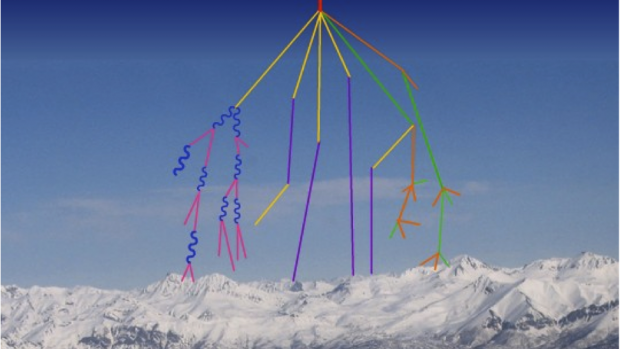
Galactic Cosmic Rays (GCR) are the slowly varying, highly energetic background source of energetic particles that constantly bombard Earth. GCR originate outside the solar system and are likely formed by explosive events such as supernova. These highly energetic particles consist of essentially every element ranging from hydrogen, accounting for approximately 89% of the GCR spectrum, to uranium, which is found in trace amounts only. These nuclei are fully ionized, meaning all electrons have been stripped from these atoms. Because of this, these particles interact with and are influenced by magnetic fields. The strong magnetic fields of the Sun modulate the GCR flux and spectrum at Earth.
Over the course of a solar cycle the solar wind modulates the fraction of the lower-energy GCR particles such that a majority cannot penetrate to Earth near solar maximum. Near solar minimum, in the absence of many coronal mass ejections and their corresponding magnetic fields, GCR particles have easier access to Earth. Just as the solar cycle follows a roughly 11-year cycle, so does the GCR, with its maximum, however, coming near solar minimum. But unlike the solar cycle, where bursts of activity can change the environment quickly, the GCR spectrum remains relatively constant in energy and composition, varying only slowly with time. (See Forbush decrease for short-term changes of GCR related to space strong solar events)
These charged particles are traveling at large fractions of the speed of light and have tremendous energy. When these particles hit the atmosphere, large showers of secondary particles are created with some even reaching the ground. These particles pose little threat to humans and systems on the ground, but they can be measured with sensitive instruments. The Earth’s own magnetic field also works to protect Earth from these particles largely deflecting them away from the equatorial regions but providing little-to-no protection near the polar regions or above roughly 55 degrees magnetic latitude (magnetic latitude and geographic latitude differ due to the tilt and offset of the Earth’s magnetic field from its geographic center). This constant shower of GCR particles at high latitudes can result in increased radiation exposures for aircrew and passengers at high latitudes and altitudes. Additionally, these particles can easily pass through or stop in satellite systems, sometimes depositing enough energy to result in errors or damage in spacecraft electronics and systems.
Image courtesy of: https://www.windows2universe.org/physical_science/physics/atom_particle/...
Impacts: Satellites Humans in Space Passengers and Crew on aircraft at high latitudes (polar routes)
Electromagnetic Radiation
Claimed by Zoila de Leon (Fall 2023)
- 1.1 What is a Electromagnetic(EM) Radiation?
- 1.2 General Properties
- 1.3 Problem Solving Method and Equations
- 1.4 Fields Made by Charges and Fields Made by Monopoles
- 2 The EM Spectrum
- 3 Waves and Fields
- 4 A Mathematical Model
- 5 Connectedness: X-Rays
- 6.1 Practice Problems (new section by Zoila)
- 7 References
What is a Electromagnetic(EM) Radiation?
Electromagnetic radiation is a form of energy that is all around us and takes many forms, such as radio waves, microwaves, infrared, visible light, ultraviolet, x-rays, and gamma rays.
Before 1873, electricity and magnetism were thought to be two different forces. However, in 1873, Scottish Physicist James Maxwell developed his famous theory of electromagnetism. There are four main electro magnetic interactions according to Maxwell:
- The force of attraction or repulsion between electric charges is inversely proportional to the square of the distance between them
- Magnetic poles come in pairs that attract and repel each other much as electric charges do
- An electric current in a wire produces a magnetic field whose direction depends on the direction of the current
- A moving electric field produces a magnetic field, and vice versa

General Properties
The four Maxwell's Equations provide a complete description of possible spatial patterns of electric and magnetic field in space.
- The Ampere-Maxwell Law
- Gauss's Law
- Faraday's Law
Other than Maxwell's Four equations, there are general properties of all electromagnetic radiation:
- Electromagnetic radiation can travel through empty space. Most other types of waves must travel through some sort of substance. For example, sound waves need either a gas, solid, or liquid to pass through in order to be heard
- The speed of light is always a constant (3 x 10^8 m/s)
- Wavelengths are measured between the distances of either crests or troughs. It is usually characterized by the Greek symbol λ (lambda).
Electromagnetic waves are the self-propagating, mutual oscillation of electric and magnetic fields. The propagation of electromagnetic energy is often referred to as radiation. We can also say that the 'pulse' of these moving fields result in radiation (7).
The equation for propagation is E=cB with c being the speed of light. This equation is derived from combining the two equations E=vB and B=u0e0vE, proving that v is equal to 3e8 meters/second.
Problem Solving Method and Equations
To go about solving/analyzing mathematically an electromagnetic field using Maxwell's equations,this is how we proceed (7)
- Establish the space and time in which the electric and magnetic fields are present
- Check that Maxwell's equations can be applied in the situation above
- Check when the charge accelerates, it produces these fields and therefore radiation
- Show how these fields would interact with matter
The equation of the Radiative Electric Field is: E= 1/(4πe0)*-qa/(c^2r) where a is the acceleration of the particle, c is the speed of light and r is the distance from the original location of the charge to right before the kink. This kink happens on the electric field because of the slight delay when the charge is moved.
Fields Made by Charges and Fields Made by Monopoles
We can differentiate fields made by charges and the ones made by magnetic monopoles. (7) For fields made by charges, when the charge is
- at rest, E=1/r^2 and B=0
- constant speed, E=1/r^2 and B=1/r^2
- accelerating, E=1/r and B=1/r
For fields made by magnetic monopoles, the first point would have E and B switched.
The EM Spectrum
EM spectrum is a span of enormous range of wavelengths and frequencies. The EM spectrum is generally divided into 7 different regions, in order of decreasing wavelength and increasing energy and frequency. It ranges from Gamma rays to Long Radio Waves. Following are the lists of waves:
- Visible Light
- Infrared Rays
- Long radio waves
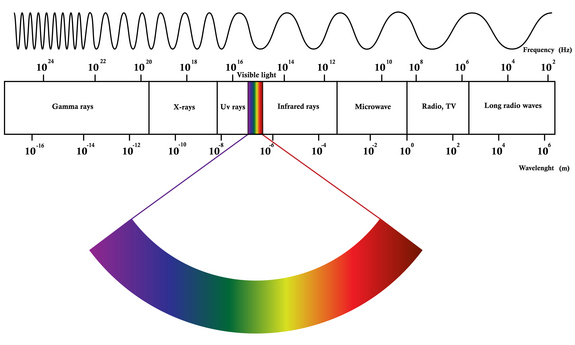
Although all these waves do different things, there is one thing in common : They all travel in waves.
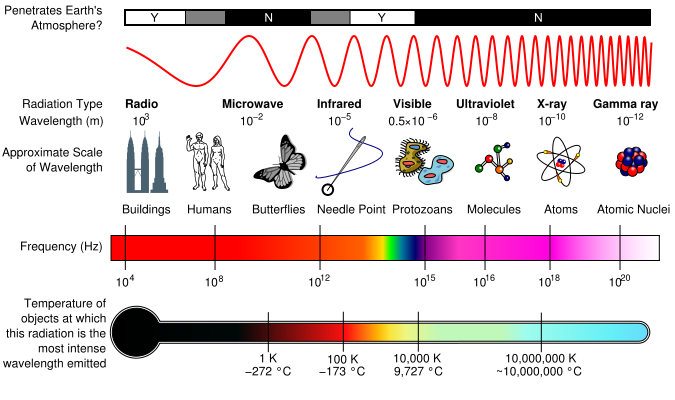
Infrared radiation can be released as heat or thermal energy. It can also be bounced back, which is called near infrared because of its similarities with visible light energy. Infrared Radiation is most commonly used in remote sensing as infrared sensors collect thermal energy, providing us with weather conditions.
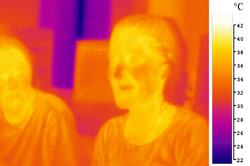
Visible Light is the only part of the electromagnetic spectrum that humans can see with a naked eye. This part of the spectrum includes a range of different colors that all represent a particular wavelength. Rainbows are formed in this way; light passes through matter in which it is absorbed or reflected based on its wavelength. As a result, some colors are reflected more than other, leading to the creation of a rainbow.
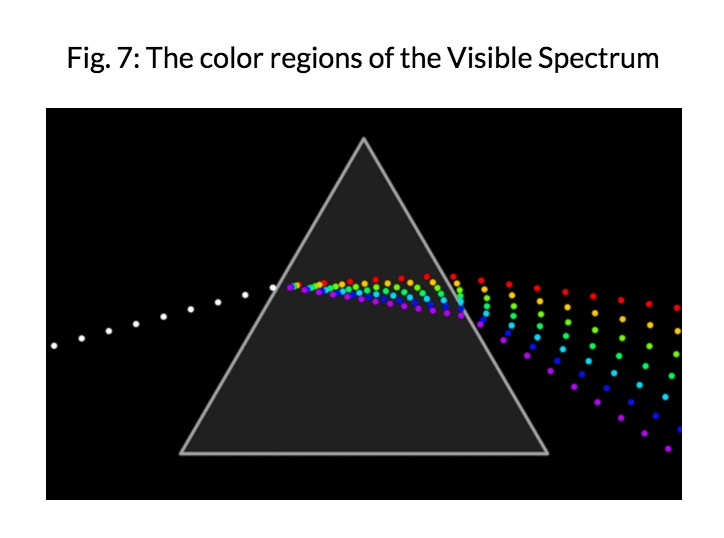
Waves and Fields
As we learned in class, electric field is produced when an electron is accelerating. Likewise, EM radiation is created when an atomic particle, like an electron, is accelerated by an electric field. The movement like this produces oscillating electric and magnetic fields, which travel at right angles to each other in a bundle of light energy called a photon. Photons travel in a harmonic wave at the fastest speed possible in the universe.
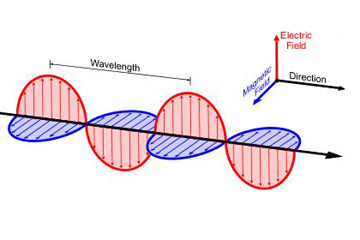
Electromagnetic waves are formed when an electric field couples with a magnetic field. Magnetic and electric fields of an electromagnetic wave are perpendicular to each other and to the direction of the wave.
A wavelength (in m) is the distance between two consecutive peaks of a wave. Frequency is the number of waves that form in a given length of time. A wavelength and frequency are interrelated. A short wavelength indicates that the frequency will be higher because one cycle can pass in a shorter amount of time. Likewise, a longer wavelength has a lower frequency because each cycle takes longer to complete.

Waves can be classified according to their nature:
- Mechanical waves
- Electromagnetic waves
Mechanical Waves
Mechanical waves require a medium (matter) to travel through. Examples are sound waves, water waves, ripples in strings or springs.
Water Waves
Sound Waves
Electromagnetic Waves
Electromagnetic waves do not require a medium (matter) to travel through - they can travel through space. Examples are radio waves, visible light, x-rays.

Radio Waves
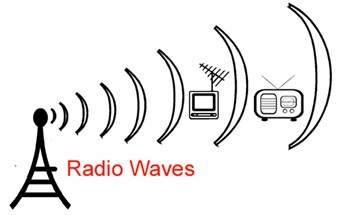
Visible Lights

A Mathematical Model
The position of the particle is defined by a sine wave:
y = ymaxsin(wt)
Where w is the angular frequency
Amplitude is the distance from the maximum vertical displacement of the wave to the middle of the wave. The Amplitude of the sinusoidal Wave is the height of the peak in the wave measured from the zero line. This measures the magnitude of oscillation of a particular wave. The Amplitude is important because it tells you the intensity or brightness of a wave in comparison with other waves.
The period of the wave is the time between crests in seconds(s).
T = 2pi/w-----(units of seconds)
Frequency is the number of cycles per second, and is expressed as sec-1 or Hertz(Hz). Frequency is directly proportional to energy and can be express as "
E = hv where E is energy, h is Planck's constant ( 6.62607*10^-34J) and v is frequency
f = 1/T f = w/2pi----(Units Hertz)
Wavelength is the distance between crests in meters. Wavelength is equal to the speed of light times frequency. Longer wavelength waves such as radio waves carry low energy; this is why we can listen to the radio without any harmful consequences. Shorter wavelength waves such as x-rays carry higher energy that can be hazardous to our health.
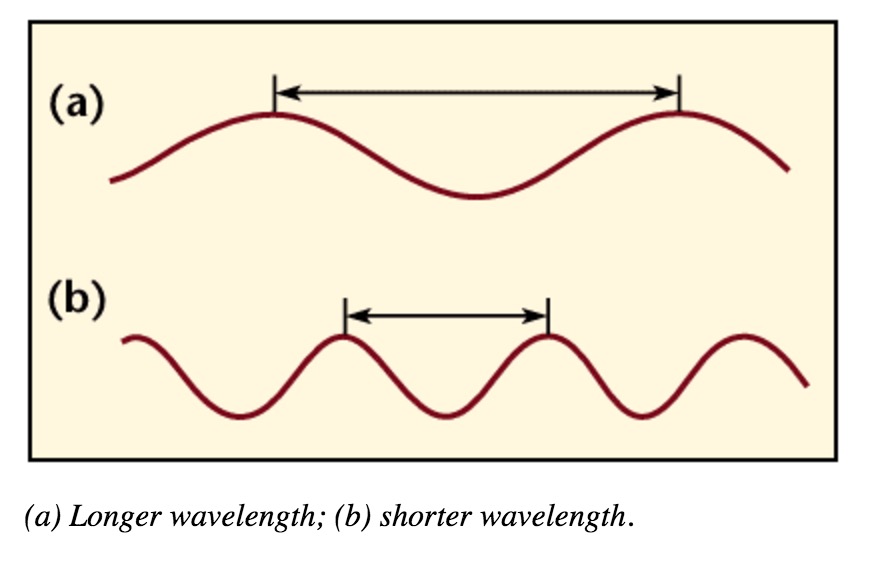
Wavelength and Frequency
The speed of light is the multiplication of the wavelength and frequency.
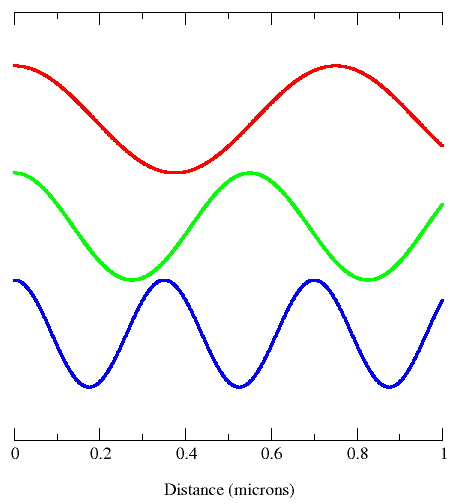
This diagram shows all properties of waves:
ENERGY FLUX
Is defined by the following equation:
Connectedness: X-Rays
Electromagnetic Radiation while commonly thought of as only including visible light, radio waves, UV waves, and gamma rays; also include X-rays. In 1895, X-rays were initially discovered by William Roentgen, who accidentally fell upon the most important discovery about his life (Figure 1). Roentgen was already working on cathode rays, and because of a fluorescent glow that occurred during his experiments, covered his experimental apparatus with heavy black paper. However, when he did this, he discovered a glow coming from a screen several feet away. Through many more experiments, he discovered that a new type of energy, not cathode rays, were the cause of the glow. He named them “x-rays” and received the 1901 Nobel Prize in Physics. Roentgen never patented his monumental discovery and as a result, numerous researchers set out to find a multitude of uses and capitalize on his work.
Primarily, people could now view objects that were hidden from plain view (i.e. scanners in airports). While X-rays are now used in 100’s of professions (security, chemistry, art galleries), its most important function is to view bones to determine abnormalities in humans. In fact, one of Roentgen’s first x-rays was of his wife’s hand (Figure 2). X-rays fall under the scope of electromagnetic radiation because, like all E.R. waves, it is comprised of photons. X-rays have wavelengths between 0.01 to 10 nanometers and fall between UV and Gamma Waves on the E.R. spectrum (Figure 3). There are two main methods in which an x-ray may be formed. Both require a vacuum-filled tube called an x-ray tube (Figure 4). With an anode on one end and a cathode on the other, an electric current is applied and a high energy electron is projected from the cathode, through the vacuum, and at the anode. In the characteristic x-ray generation approach, the electron from the cathode collides with an inner shell electron on an atom on the anode (Figure 5). Both of these electrons are ejected from the atom and an outer shell electron takes the place of the inner shell one. Because the outer electron must have a lower energy to fill the inner shell hole, it releases a photon with the equivalent energy of the difference between the two energy levels in the atom. This photon is the x-ray that is used to view objects such as bones.
In the Bremsstrahlung x-ray generation method, the electron from the cathode is slowed as it passes the nucleus of an atom at the anode (Figure 6). As it slows and its path is changed, the loses energy (kinetic energy). This energy is also released as a photon which is subsequently called an x-ray. Depending on the voltage and current of the tube and the material of the anode, different types (as in wavelengths and energy) of x-rays can be produced and each one. However, all X-rays will continue to pass through objects until it reaches a material dense that stops it. However, density of the material required depends on the energy of the x-ray. For example, during a medical x-ray, x-rays of a certain energy will pass through soft tissue (skin, organs, etc) but not through bones. The x-rays that pass through the soft tissue will strike the screen and the absence of the x-rays absorbed by the bones will cause a negative space on the screen. The areas where x-rays do not strike will form the image of the bone. While the principles remain the same, x-ray machines today use incredible sophisticated technology to specify the type of x-ray they want and have greatly increased in accuracy since Roentgen’s initial discovery.

- Information and photographs are pulled from references 1 through 5 cited below*
Already, during the Ancient Greek and Roman times, light was studied as the presence of deflection and refraction were noticed. Electromagnetic radiation of wavelengths in the early 19th century. The discovery of infrared radiation is ascribed to astronomer William Herschel, who published his results in 1800 before the Royal Society of London. Herschel used a glass Triangular prism (optics)|prism to refract light from the Sun and detected invisible rays that caused heating beyond the red part of the spectrum, through an increase in the temperature recorded with a thermometer. These "calorific rays" were later termed infrared.
In 1801, Rohann Ritter, discovered the presence of ultraviolet light using salts. It was known that light could darken some silver halides and while doing so, he realized that the region beyond the violet bar (therefore ultraviolet) was more effective in changing the color of the halides. However,in 1864, while summarizing the theories of his time accumulating into his famous set of Maxwell equations, James Clerk Maxwell managed to deduce the speed of light being around 3e8 meters per second. This was instrumental in creating the rest of the spectrum.
In 1887-1888 Physicist Heinrich Hertz not only tried to measure the velocity and frequency of electromagnetic radiation waves at other parts of the known spectrum of the time, but he was also able to prove that Maxwell's findings were correct. He did this on the microwave radiation as well.
The discovery of X-rays occurred in 1895 by Wilhelm Rontgen when his barium platinocyanide detector screen began to glow under the presence of a discharge that passed through a cathode ray tube although the latter was completely covered. Once he determined its possible use, he tried to look at his wife's hand using this new discovery. However x-ray spectroscopy was not institutionalized until later by Karl Manne Siegbahn.
In 1900, Paul Villard discovered Gamma rays although he initially thought that they were particles similar to alpha and beta particles which were emitted during radiation. These 'particles' were later proven to be part of the electromagnetic spectrum.
Practice Problems (new section by Zoila)
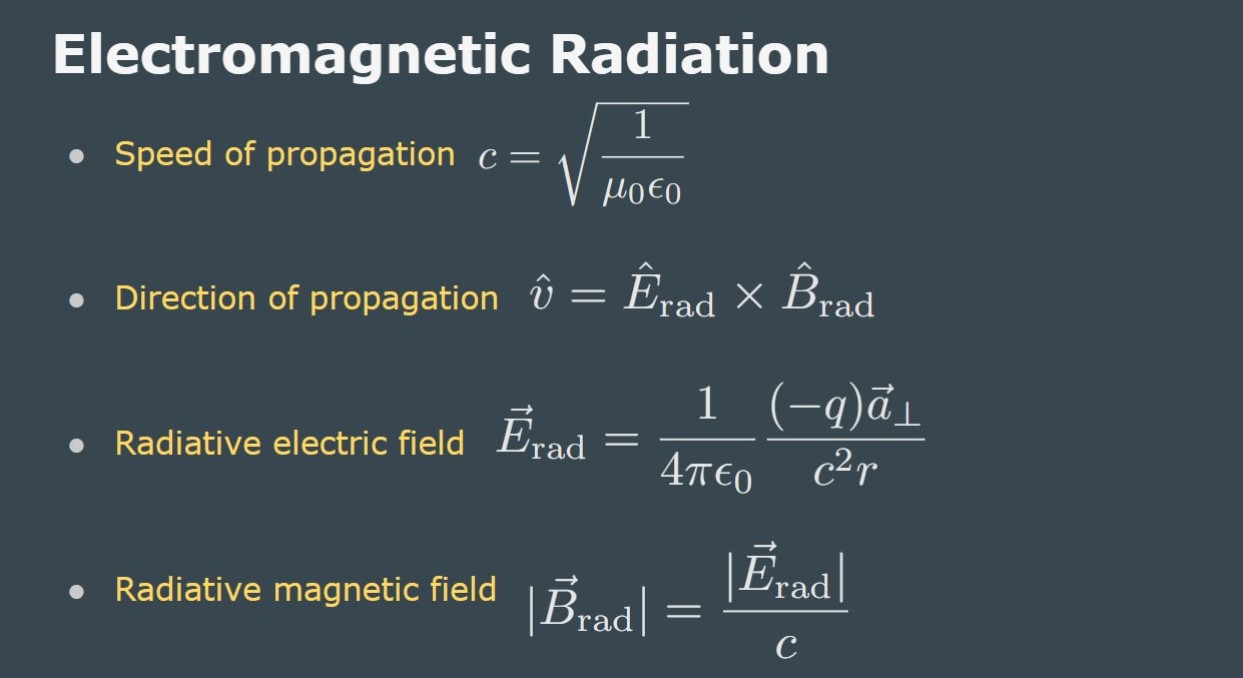
1. Elert, Glenn. "X-rays." X-rays – The Physics Hypertextbook. N.p., n.d. Web. 08 Apr. 2017. http://physics.info/x-ray/
2."X-rays." X-rays. N.p., n.d. Web. 08 Apr. 2017. http://www.physics.isu.edu/radinf/xray.htm
3. "Basics of X-ray PhysicsX-ray production." Welcome to Radiology Masterclass. N.p., n.d. Web. 08 Apr. 2017. http://www.radiologymasterclass.co.uk/tutorials/physics/x-ray_physics_production#top_2nd_img
4. "X-Rays." Image: Electromagnetic Spectrum. N.p., n.d. Web. 08 Apr. 2017. https://www.boundless.com/physics/textbooks/boundless-physics-textbook/electromagnetic-waves-23/the-electromagnetic-spectrum-165/x-rays-597-11175/images/electromagnetic-spectrum/
5. "This Month in Physics History." American Physical Society. N.p., n.d. Web. 08 Apr. 2017. https://www.aps.org/publications/apsnews/200111/history.cfm
6. Editors, Spectroscopy. “The Electromagnetic Spectrum: A History.” Spectroscopy Home, 27 Oct. 2017, www.spectroscopyonline.com/electromagnetic-spectrum-history?id=&sk=&date=&&pageID=4.
7. Chabay, Ruth W., and Bruce A. Sherwood. Matter & Interaction II: Electric & Magnetic Interactions, Version 1.2. John Wiley & Sons, 2003.
Navigation menu

In a Different Light
Astronomers use light and the different wavelengths or colors at which it radiates to uncover the mysteries of the universe. Each point, or pixel, in an astronomical image may represent temperature, a wavelength of light, or the intensity of the signal. Each color brings into view an otherwise invisible universe.

VISIBLE & INFRARED
Mystic Mountain
Visible light.
Human eyes can see only a small portion of the range of radiation given off by the objects around us. We call this wide array of radiation the electromagnetic spectrum, and the part we can see “visible light.”
By only seeing visible light, we miss out on the information conveyed by other types of radiation. Other Earth creatures can see some of the spectrum we are blind to. Certain fish, bullfrogs and snakes, for instance, can see infrared radiation, which helps them find prey through murky water or in the dark. Butterflies and some species of birds can see ultraviolet light, which helps them identify certain markings on mates.
When it comes to cosmic objects, key information is revealed by different portions of the electromagnetic spectrum. Telescopes are designed to capture different portions of this spectrum, providing more information than the human eye could detect on its own. The Hubble Space Telescope can detect a portion of infrared and ultraviolet wavelengths as well as visible light.

Because our atmosphere blocks or partially absorbs certain wavelengths, Hubble’s position 320 miles above Earth’s surface puts it in a location where it can capture details of objects that would be difficult or impossible for ground-based telescopes to observe.
Hubble has also worked in concert with other telescopes, combining its observations with those of wavelengths observed by other space telescopes. In these cases, the combined or contrasting images provide more information about the object than either image could alone.
Infrared Light
The short wavelengths of visible light make them prone to bumping into particles in their path, scattering the light and blocking it from progressing. Infrared-light wavelengths are longer and more likely to slip between particles. In space, this allows infrared wavelengths to penetrate all but the densest regions of dust. By viewing infrared light, we can essentially look through cosmic clouds of gas and dust to the objects behind and within them. Infrared light is also emitted by warm material too dim to glow significantly in visible light, and can allow us to see those objects.
Seeing infrared light is the only way to view many cosmic objects. As the light from the universe’s most distant galaxies travels through space, it’s stretched by the expansion of space. By the time the light reaches Earth, that stretching process has transformed short wavelengths of visible and ultraviolet light into the longer wavelengths of infrared light. Only telescopes that can detect infrared light can see those faraway galaxies.

Visible & infrared
Eagle Nebula
Many will recognize this popular image of a portion of the Eagle Nebula, but there's also a lesser-known second image that reveals more about this cosmic landscape. The famous visible-light image shows 5-light-year-tall pillars of cold hydrogen gas laced with dust, where stars are being born. Radiation from nearby stars, located off the top of the image, illuminate the pillars and heat the gas, which evaporates into space as streamers from the tips of the pillars. In the second Hubble image, infrared light flows through the clouds, revealing a vast number of the stars both past the nebula and blazing to life within it. Note the bright, newborn stars now obvious in the tops of the pillars in the infrared image.

Lagoon Nebula
In the visible-light image, the Lagoon Nebula is a nearly impenetrable cloud of gas and dust. Buried in its center is a hint of a monster-sized young star 200,000 times brighter than the Sun whose radiation is carving and shaping the nebula around it. Infrared light penetrates the nebula to unveil that blazing star, known as Herschel 36, as well as the myriad of background stars behind the nebula and many that were cloaked in its dust.
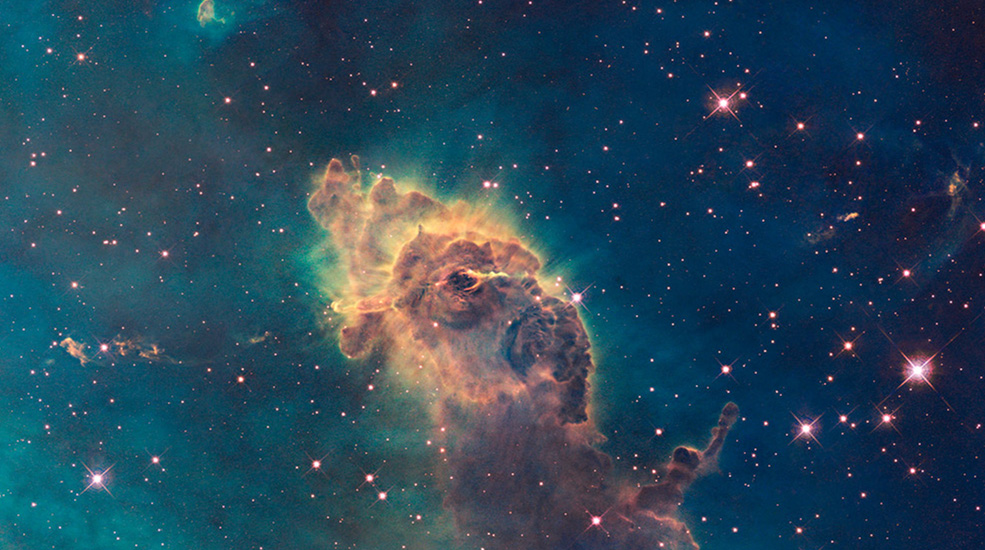
Carina Nebula Pillar
This pillar in the Carina Nebula hides newborn stars in its depths, cloaked in layers of gas and dust. In the visible-light image, we get a hint of what’s inside. Thin puffs of material and wispy clouds appear to sprout from a dark notch in the pillar’s center – a jet of matter being flung into space by a newborn star. The infrared image reveals both the star and its 10-light-year-long jet, which is pouring into space at around 850,000 miles per hour.
GOODS North
The GOODS North image includes one of the earliest objects ever observed – GN-z11, seen as it was 13.4 billion years in the past. The distant galaxy’s light arrives in our corner of the universe after having been stretched by its trip across the expanding universe into infrared wavelengths. Because this light has been traveling for so long, it shows us the galaxy as it was just 400 million years after the Big Bang. This video zooms into the GOODS North image starting with its location in the sky and ending with our infrared glimpse of GN-z11.
Ultraviolet Light
High-energy ultraviolet radiation is mostly blocked by Earth’s atmosphere – and that’s good for us, since we can’t survive too much of it. But because we can’t see it, we’re missing out on some spectacular cosmic phenomena, including light from the hottest and youngest stars embedded in local galaxies, and auroras that glow on the outer planets of our solar system. Ultraviolet observations can also help us determine the composition of the atmospheres of planets beyond our solar system.
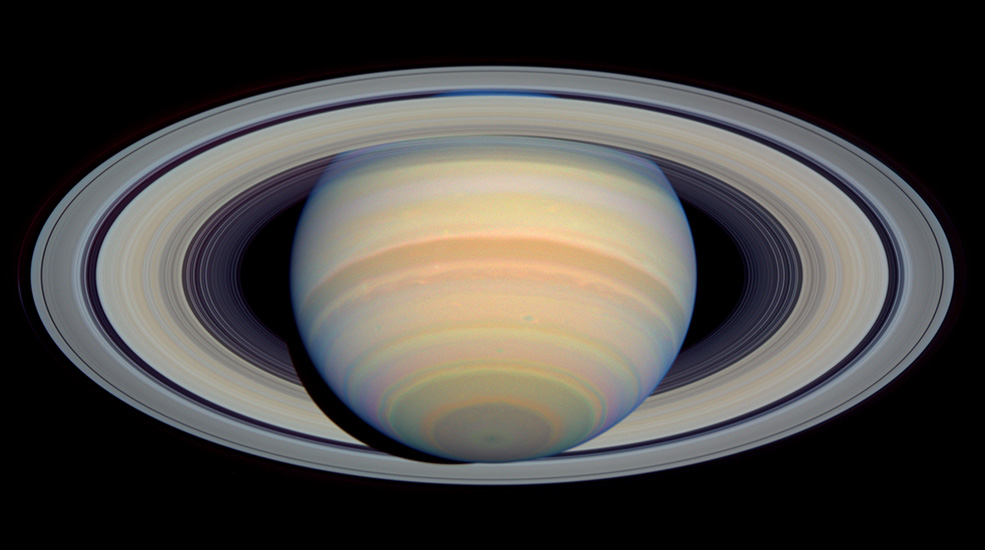
The bands circling Saturn in these images are actually haze and cloud layers, composed of different particles of gas. Here both the visible and ultraviolet images of Saturn are portrayed in false colors to make differences stand out. Some particles reflect ultraviolet light more than visible light, causing parts of Saturn to appear brighter in the ultraviolet than the visible. These images show how certain gases are more prominent in the lower atmosphere than the upper, and vice versa. Only by combining and comparing these different images, in a set such as this one, can researchers interpret the data and better understand the planet.
Auroras are caused by high-energy particles that travel along a planet's magnetic poles, where they excite atmospheric gases and cause them to glow. On Earth, the particles collide with oxygen and nitrogen gases to give off visible light in multiple shimmering colors. On the outer planets, they interact with hydrogen-heavy atmospheres, causing an ultraviolet light show visible to Hubble – as in this time-lapse series of images of ultraviolet auroras shimmering at Jupiter's north pole.
Comet Impacts on Jupiter
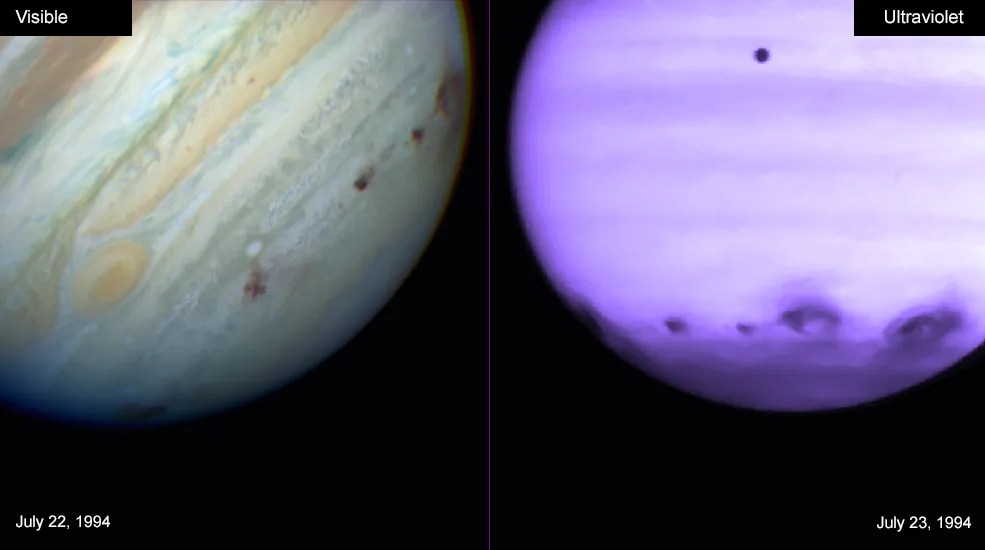
In 1994, the pieces of the shattered comet Shoemaker-Levy 9 plunged into Jupiter while Hubble watched. In images taken in visible light (left), the impact areas appear as relatively faint smudges scattered over the southern hemisphere of the gas planet. The ultraviolet image of Jupiter (right), however, shows the large quantities of UV-absorbing dust spreading high in the atmosphere following the impacts. Because the fine particles are easier to see in ultraviolet light, this image gives us a clearer picture of the comet residue and materials thrown from Jupiter’s lower atmosphere into the upper atmosphere by the impact. The dark dot near the top of the ultraviolet image is Jupiter's moon Io.
Hubble Ultra Deep Field (2014)

Astronomers captured ultraviolet light with Hubble to provide this more-comprehensive 2014 version of its Hubble Ultra Deep Field image, which had previously consisted of visible- and infrared-light observations taken between 2003–2009. This image contains all three wavelengths: visible, infrared and ultraviolet.
Ultraviolet light comes from the hottest, largest and youngest stars. By observing ultraviolet light, scientists can see which galaxies are forming stars and where the stars are forming within those galaxies.
Ultraviolet and visible light from the farthest galaxies is stretched into infrared light as it travels across the expanding universe. But for a distance extending from about 5 billion to 10 billion light-years – showing galaxies from the period when most of the stars in the universe were born – ultraviolet-light observations are key.
Collaborations with Other Telescopes
Telescopes often specialize in specific wavelengths of light. The infrared-studying Spitzer Space Telescope, the Chandra X-ray Observatory spacecraft, and the National Radio Astronomy Observatory on Earth are examples of observatories with this targeted focus. Hubble has worked in concert with other telescopes to create images of cosmic objects that incorporate a wide range of wavelengths, each image a piece of a puzzle that eventually reveals a complete view of the object and conveys unique information about the processes taking place.
The Crab Nebula
This composite image of the Crab Nebula – loops of gas and debris cast off by the explosive death of a star, energized by a compressed stellar core called a neutron star at its heart – was created by combining the data from five telescopes, spanning nearly the entirety of the electromagnetic spectrum. The red, radio-light view shows how the neutron star’s “wind” of charged particles energizes the nebula, causing it to emit radio waves. The yellow, infrared image highlights the glow of dust particles absorbing ultraviolet and visible light. The green Hubble image offers a visible-light view of hot filamentary structures throughout the nebula. The blue, ultraviolet image and purple, X-ray image show the effects of an energetic cloud of electrons driven by the rapidly rotating neutron star at the nebula’s center.
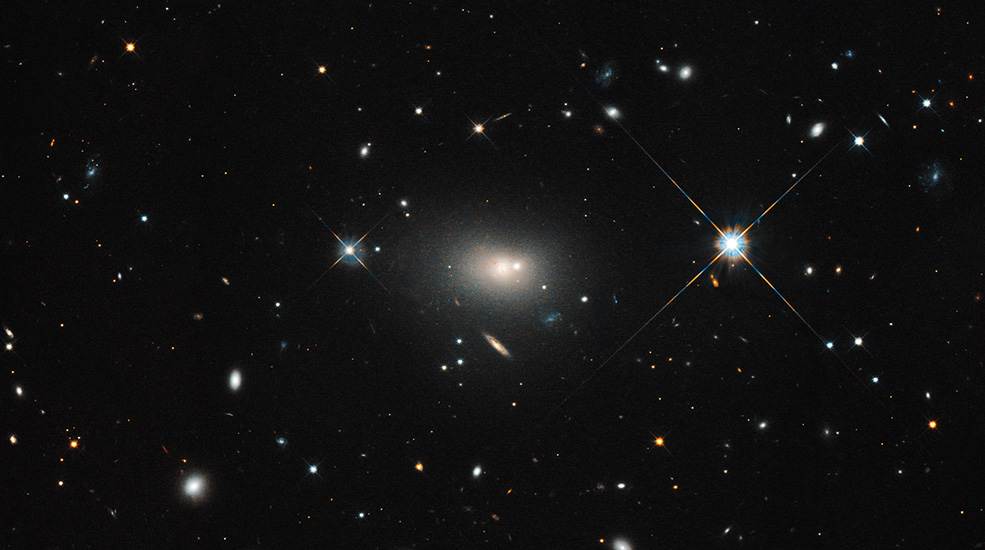
Visible & Radio
This visible-light image from Hubble shows a seemingly ordinary elliptical galaxy surrounded by other, smaller galaxies. But in that galaxy’s center lies a black hole as massive as 2.5 billion suns. The gravitational energy and fast rotation of the supermassive black hole is creating enormous jets, focused by magnetic fields, that are 1.5 million light-years long and far surpass the size of the galaxy they emanate from. The jets are made of high-energy plasma beams, subatomic particles and magnetic fields shot at nearly the speed of light from the vicinity of the black hole. Because they emit radio waves, they’re invisible to the human eye and Hubble, but fill the combined radio and visible-light image. Hercules A is one of the brightest extragalactic radio sources in the entire sky.
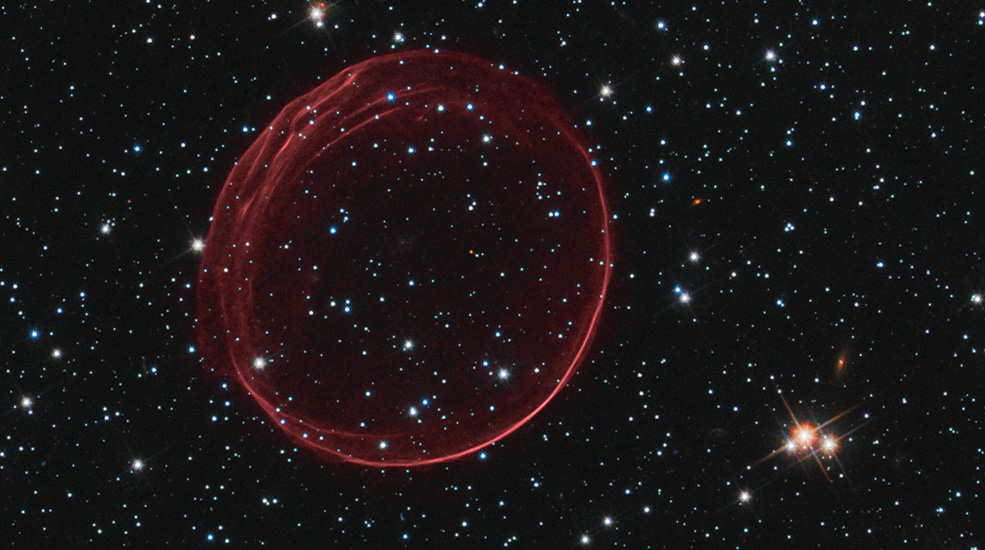
Visible & X-ray
Supernova Remnant 0509-67.5
This bubble is a supernova remnant – what’s left of a star that exploded nearly 400 years ago. As the blast from the explosion expands, the ejected material travels outward at more than 11 million miles (17.7 million km) per hour. In the visible-light image taken by Hubble, the glowing pink shell is created when the supernova blast wave compresses and expands the surrounding gas. In the combined visible-light and X-ray image, we also see the soft green and blue hues of material that has been heated to millions of degrees until it glows in X-rays.
Hubble Science Highlights
Learn about Hubble's scientific discoveries.
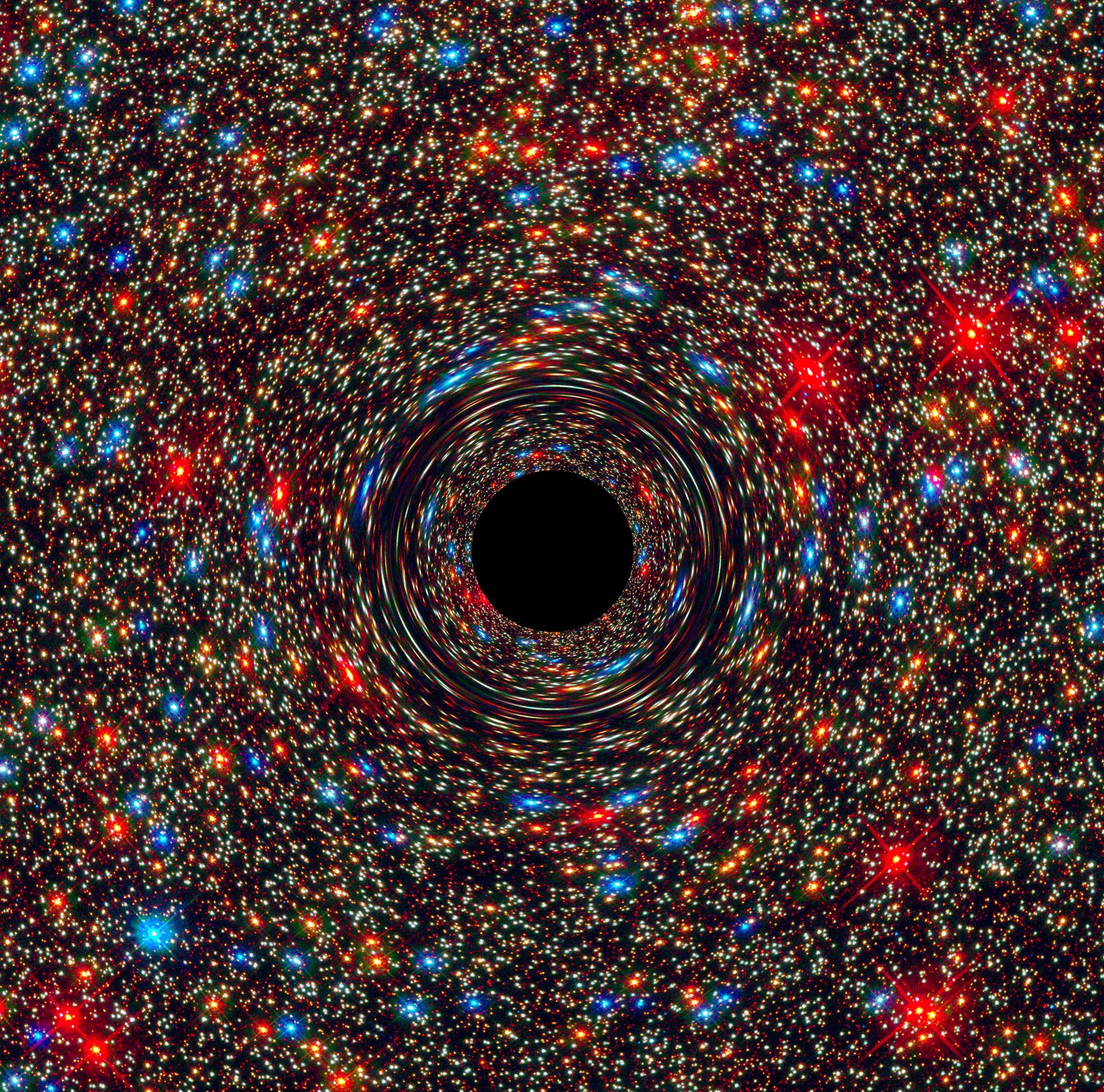
Monster Black Holes are Everywhere
Hubble found that supermassive black holes lie at the heart of nearly every galaxy.
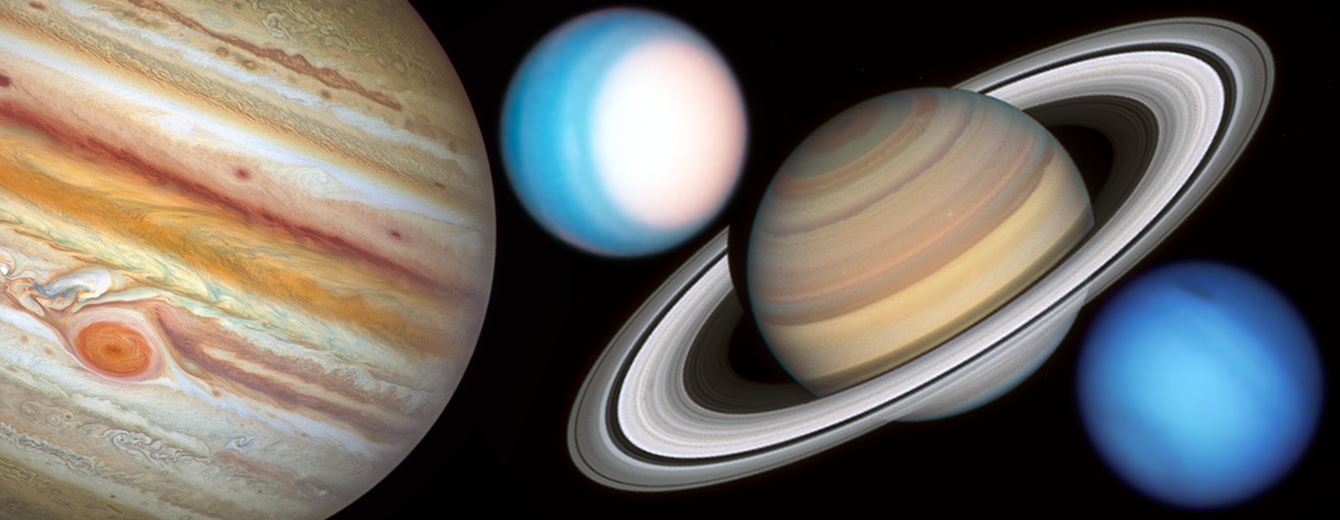
Studying the Outer Planets and Moons
Hubble’s systematic observations chart the ever-changing environments of our solar system's giant planets and their moons. about the history of Glenn Research Center.

Exploring the Birth of Stars
Hubble’s near-infrared instruments see through the gas and dust clouds surrounding newborn stars.
Explore More Hubble

Impact & Benefits
Hubble's mission is to capture observations of the universe, but its technology would alter life on the ground in unique and unexpected ways.
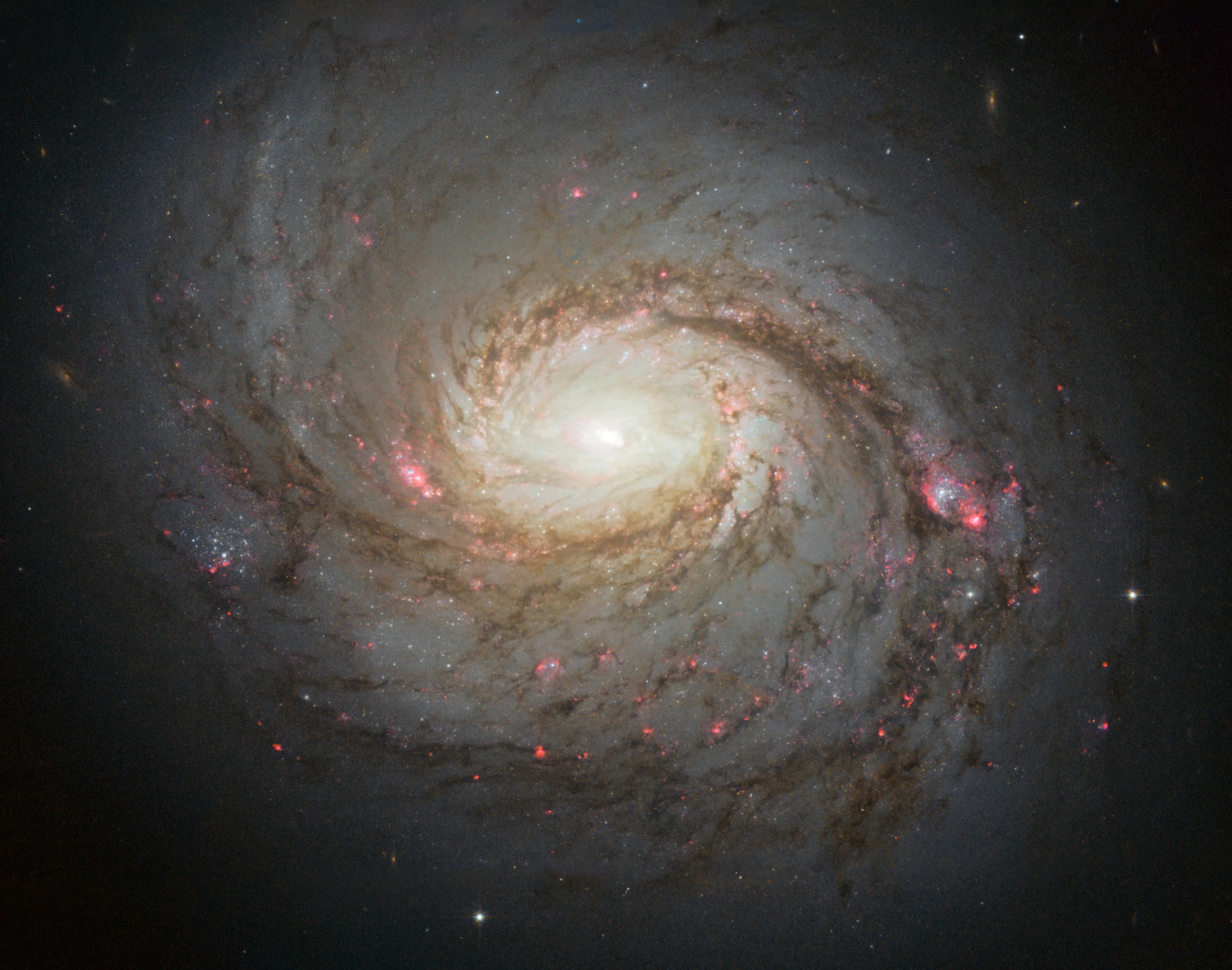
Hubble Discoveries
Hubble has changed our understanding of the universe and transformed the study of astronomy.

Hubble at Home Activities
Find your Hubble birthday image, take interactive tours, play games, and explore the universe with Hubble.

Hubble E-Books
Investigate the mysteries of the universe, or dive into Hubble's history with our free, downloadable e-books.
16.1 Traveling Waves
Learning objectives.
By the end of this section, you will be able to:
- Describe the basic characteristics of wave motion
- Define the terms wavelength, amplitude, period, frequency, and wave speed
- Explain the difference between longitudinal and transverse waves, and give examples of each type
- List the different types of waves
We saw in Oscillations that oscillatory motion is an important type of behavior that can be used to model a wide range of physical phenomena. Oscillatory motion is also important because oscillations can generate waves, which are of fundamental importance in physics. Many of the terms and equations we studied in the chapter on oscillations apply equally well to wave motion ( Figure 16.2 ).
Types of Waves
A wave is a disturbance that propagates, or moves from the place it was created. There are three basic types of waves: mechanical waves, electromagnetic waves, and matter waves.
Basic mechanical wave s are governed by Newton’s laws and require a medium. A medium is the substance mechanical waves propagate through, and the medium produces an elastic restoring force when it is deformed. Mechanical waves transfer energy and momentum, without transferring mass. Some examples of mechanical waves are water waves, sound waves, and seismic waves. The medium for water waves is water; for sound waves, the medium is usually air. (Sound waves can travel in other media as well; we will look at that in more detail in Sound .) For surface water waves, the disturbance occurs on the surface of the water, perhaps created by a rock thrown into a pond or by a swimmer splashing the surface repeatedly. For sound waves, the disturbance is a change in air pressure, perhaps created by the oscillating cone inside a speaker or a vibrating tuning fork. In both cases, the disturbance is the oscillation of the molecules of the fluid. In mechanical waves, energy and momentum transfer with the motion of the wave, whereas the mass oscillates around an equilibrium point. (We discuss this in Energy and Power of a Wave .) Earthquakes generate seismic waves from several types of disturbances, including the disturbance of Earth’s surface and pressure disturbances under the surface. Seismic waves travel through the solids and liquids that form Earth. In this chapter, we focus on mechanical waves.
Electromagnetic waves are associated with oscillations in electric and magnetic fields and do not require a medium. Examples include gamma rays, X-rays, ultraviolet waves, visible light, infrared waves, microwaves, and radio waves. Electromagnetic waves can travel through a vacuum at the speed of light, v = c = 2.99792458 × 10 8 m/s . v = c = 2.99792458 × 10 8 m/s . For example, light from distant stars travels through the vacuum of space and reaches Earth. Electromagnetic waves have some characteristics that are similar to mechanical waves; they are covered in more detail in Electromagnetic Waves .
Matter waves are a central part of the branch of physics known as quantum mechanics. These waves are associated with protons, electrons, neutrons, and other fundamental particles found in nature. The theory that all types of matter have wave-like properties was first proposed by Louis de Broglie in 1924. Matter waves are discussed in Photons and Matter Waves .
Mechanical Waves
Mechanical waves exhibit characteristics common to all waves, such as amplitude, wavelength, period, frequency, and energy. All wave characteristics can be described by a small set of underlying principles.
The simplest mechanical waves repeat themselves for several cycles and are associated with simple harmonic motion. These simple harmonic waves can be modeled using some combination of sine and cosine functions. For example, consider the simplified surface water wave that moves across the surface of water as illustrated in Figure 16.3 . Unlike complex ocean waves, in surface water waves, the medium, in this case water, moves vertically, oscillating up and down, whereas the disturbance of the wave moves horizontally through the medium. In Figure 16.3 , the waves causes a seagull to move up and down in simple harmonic motion as the wave crests and troughs (peaks and valleys) pass under the bird. The crest is the highest point of the wave, and the trough is the lowest part of the wave. The time for one complete oscillation of the up-and-down motion is the wave’s period T . The wave’s frequency is the number of waves that pass through a point per unit time and is equal to f = 1 / T . f = 1 / T . The period can be expressed using any convenient unit of time but is usually measured in seconds; frequency is usually measured in hertz (Hz), where 1 Hz = 1 s −1 . 1 Hz = 1 s −1 .
The length of the wave is called the wavelength and is represented by the Greek letter lambda ( λ ) ( λ ) , which is measured in any convenient unit of length, such as a centimeter or meter. The wavelength can be measured between any two similar points along the medium that have the same height and the same slope. In Figure 16.3 , the wavelength is shown measured between two crests. As stated above, the period of the wave is equal to the time for one oscillation, but it is also equal to the time for one wavelength to pass through a point along the wave’s path.
The amplitude of the wave ( A ) is a measure of the maximum displacement of the medium from its equilibrium position. In the figure, the equilibrium position is indicated by the dotted line, which is the height of the water if there were no waves moving through it. In this case, the wave is symmetrical, the crest of the wave is a distance + A + A above the equilibrium position, and the trough is a distance − A − A below the equilibrium position. The units for the amplitude can be centimeters or meters, or any convenient unit of distance.
The water wave in the figure moves through the medium with a propagation velocity v → . v → . The magnitude of the wave velocity is the distance the wave travels in a given time, which is one wavelength in the time of one period, and the wave speed is the magnitude of wave velocity. In equation form, this is
This fundamental relationship holds for all types of waves. For water waves, v is the speed of a surface wave; for sound, v is the speed of sound; and for visible light, v is the speed of light.
Transverse and Longitudinal Waves
We have seen that a simple mechanical wave consists of a periodic disturbance that propagates from one place to another through a medium. In Figure 16.4 (a), the wave propagates in the horizontal direction, whereas the medium is disturbed in the vertical direction. Such a wave is called a transverse wave . In a transverse wave, the wave may propagate in any direction, but the disturbance of the medium is perpendicular to the direction of propagation. In contrast, in a longitudinal wave or compressional wave, the disturbance is parallel to the direction of propagation. Figure 16.4 (b) shows an example of a longitudinal wave. The size of the disturbance is its amplitude A and is completely independent of the speed of propagation v .
A simple graphical representation of a section of the spring shown in Figure 16.4 (b) is shown in Figure 16.5 . Figure 16.5 (a) shows the equilibrium position of the spring before any waves move down it. A point on the spring is marked with a blue dot. Figure 16.5 (b) through (g) show snapshots of the spring taken one-quarter of a period apart, sometime after the end of` the spring is oscillated back and forth in the x -direction at a constant frequency. The disturbance of the wave is seen as the compressions and the expansions of the spring. Note that the blue dot oscillates around its equilibrium position a distance A , as the longitudinal wave moves in the positive x -direction with a constant speed. The distance A is the amplitude of the wave. The y -position of the dot does not change as the wave moves through the spring. The wavelength of the wave is measured in part (d). The wavelength depends on the speed of the wave and the frequency of the driving force.
Waves may be transverse, longitudinal, or a combination of the two. Examples of transverse waves are the waves on stringed instruments or surface waves on water, such as ripples moving on a pond. Sound waves in air and water are longitudinal. With sound waves, the disturbances are periodic variations in pressure that are transmitted in fluids. Fluids do not have appreciable shear strength, and for this reason, the sound waves in them are longitudinal waves. Sound in solids can have both longitudinal and transverse components, such as those in a seismic wave. Earthquakes generate seismic waves under Earth’s surface with both longitudinal and transverse components (called compressional or P-waves and shear or S-waves, respectively). The components of seismic waves have important individual characteristics—they propagate at different speeds, for example. Earthquakes also have surface waves that are similar to surface waves on water. Ocean waves also have both transverse and longitudinal components.
Example 16.1
Wave on a string.
- The speed of the wave can be derived by dividing the distance traveled by the time.
- The period of the wave is the inverse of the frequency of the driving force.
- The wavelength can be found from the speed and the period v = λ / T . v = λ / T .
- The first wave traveled 30.00 m in 6.00 s: v = 30.00 m 6.00 s = 5.00 m s . v = 30.00 m 6.00 s = 5.00 m s .
- The period is equal to the inverse of the frequency: T = 1 f = 1 2.00 s −1 = 0.50 s . T = 1 f = 1 2.00 s −1 = 0.50 s .
- The wavelength is equal to the velocity times the period: λ = v T = 5.00 m s ( 0.50 s ) = 2.50 m . λ = v T = 5.00 m s ( 0.50 s ) = 2.50 m .
Significance
Check your understanding 16.1.
When a guitar string is plucked, the guitar string oscillates as a result of waves moving through the string. The vibrations of the string cause the air molecules to oscillate, forming sound waves. The frequency of the sound waves is equal to the frequency of the vibrating string. Is the wavelength of the sound wave always equal to the wavelength of the waves on the string?
Example 16.2
Characteristics of a wave.
- The amplitude and wavelength can be determined from the graph.
- Since the velocity is constant, the velocity of the wave can be found by dividing the distance traveled by the wave by the time it took the wave to travel the distance.
- The period can be found from v = λ T v = λ T and the frequency from f = 1 T . f = 1 T .
- The distance the wave traveled from time t = 0.00 s t = 0.00 s to time t = 3.00 s t = 3.00 s can be seen in the graph. Consider the red arrow, which shows the distance the crest has moved in 3 s. The distance is 8.00 cm − 2.00 cm = 6.00 cm . 8.00 cm − 2.00 cm = 6.00 cm . The velocity is v = Δ x Δ t = 8.00 cm − 2.00 cm 3.00 s − 0.00 s = 2.00 cm/s . v = Δ x Δ t = 8.00 cm − 2.00 cm 3.00 s − 0.00 s = 2.00 cm/s .
- The period is T = λ v = 8.00 cm 2.00 cm/s = 4.00 s T = λ v = 8.00 cm 2.00 cm/s = 4.00 s and the frequency is f = 1 T = 1 4.00 s = 0.25 Hz . f = 1 T = 1 4.00 s = 0.25 Hz .
Check Your Understanding 16.2
The propagation velocity of a transverse or longitudinal mechanical wave may be constant as the wave disturbance moves through the medium. Consider a transverse mechanical wave: Is the velocity of the medium also constant?
As an Amazon Associate we earn from qualifying purchases.
This book may not be used in the training of large language models or otherwise be ingested into large language models or generative AI offerings without OpenStax's permission.
Want to cite, share, or modify this book? This book uses the Creative Commons Attribution License and you must attribute OpenStax.
Access for free at https://openstax.org/books/university-physics-volume-1/pages/1-introduction
- Authors: William Moebs, Samuel J. Ling, Jeff Sanny
- Publisher/website: OpenStax
- Book title: University Physics Volume 1
- Publication date: Sep 19, 2016
- Location: Houston, Texas
- Book URL: https://openstax.org/books/university-physics-volume-1/pages/1-introduction
- Section URL: https://openstax.org/books/university-physics-volume-1/pages/16-1-traveling-waves
© Jan 19, 2024 OpenStax. Textbook content produced by OpenStax is licensed under a Creative Commons Attribution License . The OpenStax name, OpenStax logo, OpenStax book covers, OpenStax CNX name, and OpenStax CNX logo are not subject to the Creative Commons license and may not be reproduced without the prior and express written consent of Rice University.
- Skip to main content
- Keyboard shortcuts for audio player

Solar eclipse 2024: Follow the path of totality
Solar eclipse myths and rumors bubble up, from radiation to food poisoning.
Bill Chappell

People visit a NASA information booth to grab solar eclipse glasses in Russellville, Arkansas. The space agency has debunked a number of myths about the total solar eclipse — including ideas about food going bad, or unborn babies being harmed. Mario Tama/Getty Images hide caption
People visit a NASA information booth to grab solar eclipse glasses in Russellville, Arkansas. The space agency has debunked a number of myths about the total solar eclipse — including ideas about food going bad, or unborn babies being harmed.
Will a solar eclipse harm a pregnant woman's baby if she looks at it? Does an eclipse emit special radiation that can instantly blind you?
Those are some of the ideas people have been asking about — and that experts have been pooh-poohing — as people in North America anticipated seeing a total eclipse, from Mazatlán to Montreal.

Here's what time the eclipse will be visible in your region
Monday's total solar eclipse begins over Mexico's Pacific Coast at around 11:07 a.m. PT, moving east through Texas and up to Maine, finally leaving the continent on Newfoundland's Atlantic coast.
Solar eclipses have long triggered fanciful explanations and warnings, from religious mythology to modern-day superstition. In recent days, for instance, a message circulated online warning people to turn off their cellphones and other devices before midnight ahead of the eclipse, warning of powerful radiation and cosmic rays.
In reality, a solar eclipse brings a temporary sharp drop in solar radiation — an event that ham radio operators have been eagerly anticipating for months, with competitions and experiments looking to fill the Earth's suddenly radiation-free ionosphere with radio signals.
Persistent but unfounded beliefs even prompted NASA to devote a special page to debunking misconceptions about a solar eclipse.
Total eclipses don't produce rays that cause blindness, NASA says
During totality, electromagnetic radiation from the sun's corona will not harm you. In fact, the only time it's safe to look at the sun without eye protection, as the sun's brightness is fully obscured by the moon and its corona is visible.
But outside of totality, your eyes can be harmed during an eclipse. If the sun is only partially obscured, looking at it will damage your retina. You can look if you have special solar glasses, but don't count on those to protect you if you want to use a telescope or camera lens that doesn't have a solar filter.
As NASA says , "the concentrated solar rays will burn through the filter and cause serious eye injury."
Another thing to remember: Take breaks if you're using a special filter to look at the sun before or after totality. As the space agency says , the sun's infrared radiation can make you uncomfortable, "as it literally warms the eye."
You should look away from the sun periodically, or use an indirect viewer like a pinhole projector to track the eclipse.
More things NASA says are NOT true about a total solar eclipse
Myth: if you are pregnant you should not watch an eclipse because it can harm your baby..
Another notion that seems to be rooted in concern about radiation. To put people's mind at ease, NASA employs a sort of "you're already soaking in it" example, citing the neutrino particles produced by the sun's nuclear fusion:
"Every second, your body is pelted by trillions of these neutrinos no matter if the sun is above or below the horizon. The only consequence is that every few minutes a few atoms in your body are transmuted into a different isotope by absorbing a neutrino. This is an entirely harmless effect and would not harm you, or if you are pregnant, the developing fetus."
MYTH: Eclipses will poison any food that is prepared during the event.
NASA gives a hypothetical: What if some bad potato salad makes people sick during an eclipse? Food poisoning is very common — and it shouldn't be blamed on a rare celestial event, the agency notes.
"The basic idea is that total solar eclipses are terrifying and their ghostly green coronae look frightening, so it is natural to want to make up fearful stories about them and look for coincidences among events around you."
Other myths have to do with omens and major events
Here are four that NASA singles out for debunking:
MYTH: Eclipses are harbingers of something very bad about to happen.
Myth: solar eclipses foretell major life changes and events about to happen., myth: solar eclipses are a sign of an exceptional celestial event taking place in time and space., myth: solar eclipses six months after your birthday, or on your birthday, are a sign of impending bad health..
NASA ascribes many of these ideas to astrological forecasts being propped up by confirmation bias.
As the agency says, "We tend to remember all the occasions when two things happened together, but forget all of the other times when they did not."
Other myths — such as the idea that the moon turns black during an eclipse, or that the Earth's two poles don't see eclipses — are simply false, the agency says.
Eclipses have deep spiritual meanings
Ideas about an eclipse's potentially powerful effects aren't new. In fact, solar eclipses do also cause some unusual things to happen .

Want to see how a solar eclipse alters colors? Wear red and green on Monday
People in totality can expect to feel a sudden drop in temperature, for instance. Stars and planets become visible in the middle of the day, and humans can experience a range of odd visual effects — from the sharpness of shadows to the movement of "shadow bands" and a change in how we perceive color.
Then there's the eerie effect of the eclipse moving from west to east, adding to the perception that time isn't moving in its normal path.
Many cultures and religions link eclipses to energy, seeing them as events of renewal and promise — or in some cases, of vital energy being drained away.
For the Ojibwe and other Indigenous peoples in the Great Lakes region, a story about a solar eclipse centers on a boy and his sister who trap the sun after it burns him.
In many folktales, magical animals try to eat the sun or the moon. In Hindu mythology, a serpent god, Rahu Ketu, wanted to eat the sun — but then his head was cut off. That created two new entities, Rahu and Ketu, according to the Folklife Today blog from the Library of Congress.
"These are the deities of eclipses and comets. Rahu is fixated on eating the sun and the moon, and will try to catch them and gobble them up," the blog notes. "Fortunately he only succeeds once in a while. Since his head was cut off, the sun or moon just falls out the hole where his neck used to be. This is an eclipse."
As Folklife Today notes, in many cultures, humans take up the duty of ending an eclipse, often by making noise and beating on drums or gongs to dispel the spirit that's attempting to take the sun.
Watch CBS News
Are your eclipse glasses safe? How to know they'll really protect your eyes during today's total solar eclipse
By Kerry Breen
Edited By Allison Elyse Gualtieri , Alex Sundby
Updated on: April 8, 2024 / 12:11 PM EDT / CBS News
The 2024 total solar eclipse is today — and if you're hoping to get a glimpse of the phenomenon, it's best to make sure that you have real, working eclipse glasses that can protect your eyes .
Here's what to know about eclipse glasses and how to check that they are safe to use.
Are solar eclipse glasses safe to view the total solar eclipse with?
Solar eclipse glasses can be used to safely view a total solar eclipse , but it's important to make sure they're of the right quality. Don't use sunglasses, smoked glass, an unfiltered telescope and magnifiers or polarized filters as a way to view the eclipse.
The only glasses that should be used to look at a partially eclipsed sun is with eclipse glasses that meet an international standard, ISO 12312-2, according to the American Optometric Association.
That international safety standard, which is set by the International Organization for Standardization , means the glasses reduce visible sunlight to a safe level, and block ultraviolet and infrared radiation, according to the American Astronomical Society website. According to the ISO, the safety standard is reviewed every five years.
Blocking that radiation is important. Ultraviolet, or UV, radiation can damage the cells of the eyes, while the infrared, or IR, radiation can generate heat that causes thermal damage, according to the National Eye Institute .
How to make sure the eclipse glasses you bought are real
Real eclipse glasses will have a note about the international standard somewhere on their body, according to the American Astronomical Society. Before buying, make sure the glasses are advertised as meeting this standard.
If you already bought the glasses, check the arm for the the "ISO 12312-2" label. The standard may also be written as "ISO 12312-2:2015," the AAS says on its website. Either designation means that the glasses will block light and radiation.
The label may be on the flat or curved part of the arm.

NASA has also released guidance on how to test your eclipse glasses. The space agency recommends putting on your glasses and finding a bright light. If the light appears extremely dim, or doesn't appear at all, when you look at it through the glasses, they are legitimate. You should only be able to see the filament of the bulb, not its glow.
How to avoid buying fake solar eclipse glasses
Checking for the international standard isn't foolproof: It's possible for sellers with products who do not meet the standard to label their eyewear with it anyway. To avoid this, make sure you're ordering glasses from a reliable source.
The American Astronomical Society advises against ordering from Amazon, Temu or other online marketplaces, and recommends against ordering if prices seem to be too good to be true. The AAS also said it's best to purchase from manufacturers based in the United States. CBS News previously reported that counterfeit glasses have been sold by companies based overseas.
The organization maintains a list of reputable vendors of solar eclipse glasses. CBS News previously reported that NASA supports the American Astronomical Society 's work, though the space agency does not maintain its own list of vendors.
The ISO, the body that established the international standard for eclipse glasses, also sells them on its website.
Why it's important to double-check older solar eclipse glasses
If you're reusing glasses from a previous solar eclipse, it's important to double-check that they are still in good condition. NASA warns against using glasses that have any marks or scratches on them. This damage can diminish the protection they offer. Glasses that have punctured lenses should also not be used.
Glasses that are more than three years old should not be used to view the 2024 total solar eclipse, according to the National Eye Institute — so if you saved your glasses from the 2017 eclipse, you may want to think about finding a new pair.
How to make sure your homemade eclipse viewing tool is safe
If you're not buying glasses, it is possible to make an indirect viewing method for viewing the eclipse at home. An indirect viewing method means that you don't look directly at the sun so your eyes remain protected even without eyewear.
NASA recommends making a pinhole projector, which uses a small opening like a hole punched in an index card, to project an image of the sun onto a nearby surface. When using a pinhole projector, keep the sun at your back and view the projected image to safely see the eclipse. However, to do this safely, it's important to make sure to avoid actually looking at the sun itself.

Kerry Breen is a reporter and news editor at CBSNews.com. A graduate of New York University's Arthur L. Carter School of Journalism, she previously worked at NBC News' TODAY Digital. She covers current events, breaking news and issues including substance use.
More from CBS News

Look at the solar eclipse too long? Doctors explain signs of eye damage

How to make pinhole cameras to watch the 2024 solar eclipse safely

Is it safe to take pictures of the solar eclipse with your phone?

How often do total solar eclipses happen?

Solar Eclipse 2024: What to Know as the Eclipse Passes Over
T he first total solar eclipse to pass over the U.S. since 2017 took place Monday, as the moon scooted between Earth and the sun, casting a shadow that plunged parts of North America into darkness. In a swath of the continent known as the path of totality—where the sun was totally covered—temperatures were expected to drop, and some animals were expected to go gaga as day turned to night.
“The first time I saw one was life-changing and mind-blowing,” said C. Alex Young, a National Aeronautics and Space Administration solar astrophysicist. “I feel like there’s this window that opens up that allows me to see our star in a way that normally we can’t experience with our own eyes.”
What time is the eclipse?
The eclipse began in the U.S. just before 12:30 p.m. local time in Texas, ending in northeastern Maine around 4:40 p.m. local time.
In Austin, Texas, the total eclipse started at 1:36 p.m. local time. Indianapolis was in total darkness beginning at 3:06 p.m. local time, while Buffalo, N.Y., completely lost sight of the sun at 3:18 p.m. local time.
Astronomers had suggested checking Timeanddate.com to see when the total eclipse began and ended in a specific area.
Where is the path of totality?
It changes from eclipse to eclipse, but this time, the path was a roughly 115-mile-wide band stretching from central Mexico to Newfoundland, Canada—passing through more than a dozen U.S. states in between.
Austin, Dallas, Indianapolis, Cleveland, Buffalo and Rochester, N.Y., were among the cities in the path of totality. Most of the rest of the continent saw a partial eclipse.
What happens during a total solar eclipse?
In the path of totality, the celestial spectacle starts as a partial eclipse, as the moon slowly obscures more of the sun over a period of time.
Just before totality, points of light appear around the edges of the moon. Scientists call these Baily’s beads, after one of the first eclipse chasers. They are the result of sunlight moving through valleys on the lunar surface and quickly disappear, leaving one final bright spot resembling a diamond on a ring. Once that disappears, the sun takes on the appearance of a black disc.
“It’s not like a sunset where it’s bright in one direction and dark in another direction,” said Jay Anderson, a Canadian meteorologist and eclipse chaser. “For the eclipse, you’re in the middle of a big shadow.”
The moon on Monday completely blocked the sun for as long as 4½ minutes. Then the process reversed, with the sun slowly re-emerging.
How can you watch a solar eclipse safely?
Skywatchers needed to use eclipse glasses, which consist of solar filters that block out light from the sun, during the event. The only time it’s safe to look directly at the sun is during totality, when the moon completely blocks the bright orb. Even 1% of the sun’s surface is 10,000 times brighter than a full moon and dangerous to view without the right equipment.
Gazing at the sun without protection can cause what is known as eclipse blindness, or retinal burns, when nerve tissue at the back of the eye is damaged. The retina has no pain receptors, so viewers are unaware when this damage occurs.
What causes a total solar eclipse?
The sun is 400 times the moon’s diameter, yet about 400 times farther away, resulting in the two appearing nearly the same size in the sky. So when the moon passes in just the right spot between Earth and the sun, the star is blocked from view.
How often do total solar eclipses occur?
These events happen somewhere on the planet every year or two. The geometry of the Earth’s orbit, moon’s orbit and their relative positions in relationship to the sun make it so that, on average, the same spot on Earth only experiences a total solar eclipse once every 375 years.
Some parts of the U.S. are lucky. Small areas in Missouri, Illinois and Kentucky experienced totality in 2017 and got to experience it again in 2024.
How long do total eclipses last?
There is no standard length for a total eclipse, though there is always one place where totality lasts the longest. For Monday’s eclipse, the maximum duration of totality was four minutes, 28 seconds near Torreón, Mexico. The longest total eclipses on record have exceeded seven minutes.
“The average length is about 3½ minutes,” Anderson said. “The shortest I’ve seen is 18 seconds.”
The length depends on how close the moon is to Earth, and how far the sun is from Earth on eclipse day. The farther away the sun, the smaller it appears in the sky, and the more easily it can be covered by the moon. The closer the moon, the bigger it appears, and the longer its disc will cover the sun.
The nearness of the moon also affects the shadow it projects onto the planet. The path of totality for this eclipse was wider than the one from 2017, which was roughly 70 miles wide.
How can cloud cover affect your eclipse experience?
Clouds can conceal a total eclipse but don’t completely thwart the experience. Even if the sight of the moon fully blocking the sun is obscured, the temperature drop, changing winds, impacts on animals and darkening that accompany totality are noticeable.
“There was still a visceral experience about it, there was still a sensory experience that’s different than anything you would experience in your lifetime,” according to Young, who said he has experienced a couple of total eclipses that were clouded out.
Historical data about typical cloud coverage this time of year in North America suggested Mexico and the southern U.S. were the most likely spots along the path of totality to be cloud-free. But the latest forecasts had shown Texas and many other parts of the path blanketed in clouds.
Cloud cover can change over the course of the day and during the eclipse itself, according to Patricia Reiff, a professor of physics and astronomy at Rice University in Houston.
“Some clouds begin to thin, and even those thin clouds become more transparent as totality approaches, because there’s not as much sunlight scattered inside them,” Reiff said, adding that she has experienced eclipses in which the sky opened up just for totality before the clouds closed in again.
What science can be done during a total solar eclipse?
Researchers can use these events to improve their understanding of difficult-to-study parts of the sun’s upper atmosphere, known as the corona. The superhot corona is so faint compared with the sun’s surface that it can’t be seen from Earth unless the light from the sun is totally blocked. While scientists can build instruments that mimic solar eclipses, they don’t measure up to the real thing, experts say.
The National Center for Atmospheric Research planned to use a jet to follow the path of totality and observe infrared light from the corona. The corona is a source of solar wind—a stream of charged particles spewed into the solar system that can affect our navigation and communication systems, satellites and power grids by causing space weather above our planet. By better understanding the corona, scientists hope to improve our ability to predict dangerous space weather, said Paul Bryans, a project scientist at the center.
NASA also planned to launch small rockets to study how an electrically charged part of Earth’s atmosphere known as the ionosphere changes in the sun’s absence during an eclipse. Radio and GPS signals from satellites and ground-based systems travel through the ionosphere, so changes there could affect technology.
What happens to animals during an eclipse?
Anecdotal evidence suggests that, as the moon slowly blocks out the sun, most animals tend to switch to their nighttime routines, but the study of animal behavior during these events has been limited, according to Adam Hartstone-Rose, a professor of biological sciences at North Carolina State University.
During the 2017 eclipse, Hartstone-Rose said he and his colleagues watched more than a dozen species at the Riverbanks Zoo in Columbia, S.C., during totality. The group noticed lorikeets flocked together and flew to their nighttime roost, giraffes started galloping in their enclosure, a sedentary Komodo dragon started running around its cage, and Galapagos tortoises began mating.
“Obviously, we can’t know exactly what animals are thinking,” he said, “but many species had a reaction that we think that we relate to anxiety.”
When is the next total solar eclipse?
Viewers in Spain and Iceland will experience the next totality on Aug. 12, 2026. Less than a year after that, skywatchers in parts of North Africa, Saudi Arabia and Spain will also glimpse a total solar eclipse.
The continental U.S.’s next totality experience won’t occur until 2044, when a total eclipse passes over Montana and North Dakota. A 2045 total eclipse will herald a longer path of totality, cutting from Florida to California.
According to scientists, eventually Earth will stop experiencing total eclipses. More than 50 years ago, Apollo astronauts left laser reflectors on the moon’s surface to help determine how far away it is from Earth. Observations show the moon is moving away at a rate of about 1.5 inches a year. As the moon recedes, how large it appears in the sky shrinks, so in about 600 million years the moon will be far enough away that it will appear too small to fully cover the sun, Bryans said.
How do you photograph a solar eclipse?
Believe it or not, a smartphone mounted to a tripod is sufficient to photograph totality. Don’t forget to turn off the autoflash, and consider doing a panorama shot.
To snap a close-up of the sun’s darkened disc, opt for a powerful telephoto lens.
Eclipse chasers and scientists recommend spending most of a total eclipse looking up or observing the world around you rather than taking photos.
“What I’ve sometimes done during totality is set up my camera, or my cellphone, on a tripod, turned it on video and just hit record and left it alone,” Young said. “My recommendation has always been to just put your camera down and enjoy.”
To photograph a partial eclipse before and after totality, be sure to purchase a solar filter for your lens. (Remove it during totality.) Never use a camera—or binoculars or a telescope—without a filter because these devices concentrate a lot of light into your eyes and cause injury, even if you have eclipse glasses on, according to NASA.
Other tips for seeing a total solar eclipse?
Totality plunges parts of the world into a darkness akin to a full moonlit night. Astronomers say you are able to see planets such as Venus and Jupiter.
To get a better experience, Young said to avoid city lights as you would if you were watching a meteor shower.
“If there’s a place that normally has really good stars, then that’s going to be a good place to see the eclipse,” Reiff said.
This explanatory article may be periodically updated.
Write to Aylin Woodward at [email protected]
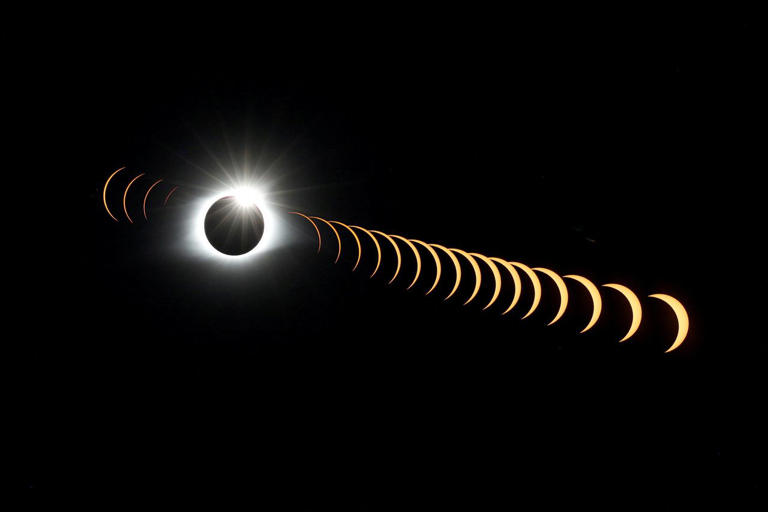

IMAGES
VIDEO
COMMENTS
Facts & FAQ. Light is such a fundamental part of our lives. From the moment we're born, we are showered with all kinds of electromagnetic radiation, both colorful, and invisible. Light travels through the vacuum of space at 186,828 miles per second as transverse waves, outside of any material or medium, because photons—the particles that ...
Summary. Cosmic rays are particles that travel through interstellar space at a typical speed of 90% of the speed of light. The most abundant elements in cosmic rays are the nuclei of hydrogen and helium, but electrons and positrons are also found. It is likely that many cosmic rays are produced in supernova shocks.
An illustration shows cosmic rays launched through space by cosmic events bombarding Earth. ... These are neutral particles that travel straight and can therefore indirectly reveal the origin of ...
Space radiation is comprised of atoms in which electrons have been stripped away as the atom accelerated in interstellar space to speeds approaching the speed of light - eventually, only the nucleus of the atom remains. Space radiation is made up of three kinds of radiation: particles trapped in the Earth's magnetic field; particles shot ...
They always travel through the vacuum of space at 186,400 miles per second—the speed of light—which is faster than anything else. Too bad we can glimpse only about 0.0035 percent of the light ...
To this day, it provides guidance on understanding how particles move through space — a key area of research to keep spacecraft and astronauts safe from radiation. The theory of special relativity showed that particles of light, photons, travel through a vacuum at a constant pace of 670,616,629 miles per hour — a speed that's immensely ...
Well, space is not in fact empty. It is filled with tenuous (and in some places not so tenuous) plasma. This plasma is much like our atmosphere and shock waves can in fact travel though it. Dr. Louis Barbier. (November 2001) Radio Signals in Space. We have learned that waves have to travel through a medium.
Cosmic Rays. Cosmic rays provide one of our few direct samples of matter from outside the solar system. They are high energy particles that move through space at nearly the speed of light.Most cosmic rays are atomic nuclei stripped of their atoms with protons (hydrogen nuclei) being the most abundant type but nuclei of elements as heavy as lead have been measured.
We can also estimate how far typical cosmic rays travel before striking Earth. The light elements lithium, beryllium, and boron hold the key. Since these elements are formed when carbon, nitrogen, and oxygen strike interstellar protons, we can calculate how long, on average, cosmic rays must travel through space in order to experience enough ...
Gamma-ray wavelengths are so short that they can pass through the space within the atoms of a detector. Gamma-ray detectors typically contain densely packed crystal blocks. As gamma rays pass through, they collide with electrons in the crystal. This process is called Compton scattering, wherein a gamma ray strikes an electron and loses energy ...
Electromagnetic radiation is one of the many ways that energy travels through space. The heat from a burning fire, the light from the sun, the X-rays used by your doctor, as well as the energy used to cook food in a microwave are all forms of electromagnetic radiation. While these forms of energy might seem quite different from one another ...
Sound waves cannot travel in the vacuum of space because there is no medium to transmit these mechanical waves. Classical waves transfer energy without transporting matter through the medium. Waves in a pond do not carry the water molecules from place to place; rather the wave's energy travels through the water, leaving the water molecules in ...
Sound cannot travel through empty space; it is carried by vibrations in a material, or medium (like air, steel, water, wood, etc). As the particles in the medium vibrate, energy is lost to heat, viscous processes, and molecular motion. So, the sound wave gets smaller and smaller until it disappears. In contrast, light waves can travel through a ...
Quick Answer: How Does Light Rays Travel. Light rays Light always travels in straight lines although its direction can be changed by reflection or refraction. When a ray of light passes from one medium to another, the. Electromagnetic surf is waves that may traverse matter or through empty space.
Gamma rays have wavelengths shorter than 10^-11 meters and frequencies above 30 x 10^18 hertz. The European Space Agency describes how gamma-ray photons have energies in excess of 100,000 ...
Cosmic rays are charged particles that travel through space and rain down on Earth constantly. Low-energy cosmic rays can emanate from the sun, but extremely high-energy ones are exceptional.
They travel near the speed of light through space and sometimes hit Earth's atmosphere. First discovered in 1912 by Austrian physicist Victor Hess, every day, trillions of cosmic rays of cosmic ...
Galactic Cosmic Rays (GCR) are the slowly varying, highly energetic background source of energetic particles that constantly bombard Earth. GCR originate outside the solar system and are likely formed by explosive events such as supernova. These highly energetic particles consist of essentially every element ranging from hydrogen, accounting ...
Electromagnetic radiation can travel through empty space. Most other types of waves must travel through some sort of substance. For example, sound waves need either a gas, solid, or liquid to pass through in order to be heard ... of x-rays can be produced and each one. However, all X-rays will continue to pass through objects until it reaches a ...
The Hubble Space Telescope can detect a portion of infrared and ultraviolet wavelengths as well as visible light. The light we can see with our eyes is part of a range of radiation known as the electromagnetic spectrum. Shorter wavelengths of light are higher energy, and longer wavelengths of light are lower energy.
The sun's radiation consists of small, massless packets of energy called photons. They travel seamlessly through space; whenever they strike any object, the object absorbs photons and its energy is increased, which then heats it up. So, these photons travel through a vacuum without any problem, but as soon as they collide with an object, like ...
Examples include gamma rays, X-rays, ultraviolet waves, visible light, infrared waves, microwaves, and radio waves. Electromagnetic waves can travel through a vacuum at the speed of light, v = c = 2.99792458 × 10 8 m/s. v = c = 2.99792458 × 10 8 m/s. For example, light from distant stars travels through the vacuum of space and reaches Earth.
These particles go so fast, they can penetrate easily through matter. The second source of cosmic rays is the sun. Solar flares and other solar events can also emit charged particles that reach Earth.
As NASA says, "the concentrated solar rays will burn through the filter and cause serious eye injury." Another thing to remember: Take breaks if you're using a special filter to look at the sun ...
A total solar eclipse occurs when the moon passes between Earth and the sun, completely blocking the sun's face. Those within the path of totality will see a total solar eclipse. People outside ...
Watch live coverage from NASA of the total solar eclipse. Those in the path of totality, where the moon's shadow completely blocks the sun, will see the sky darken like dusk. NASA says the sun ...
Monday's total eclipse of the sun will be viewable across a swath of 13 states. Learn what happens during an eclipse, and about preparations in one Arkansas town that is expected to double in size ...
Updated April 8, 2024, 2:00 AM PDT. By Denise Chow. Eclipse day has arrived! A total solar eclipse — nicknamed the Great American Eclipse for its long path over North America — will be visible ...
The space agency recommends putting on your glasses and finding a bright light. If the light appears extremely dim, or doesn't appear at all, when you look at it through the glasses, they are ...
Once that disappears, the sun takes on the appearance of a black disc. "It's not like a sunset where it's bright in one direction and dark in another direction," said Jay Anderson, a ...